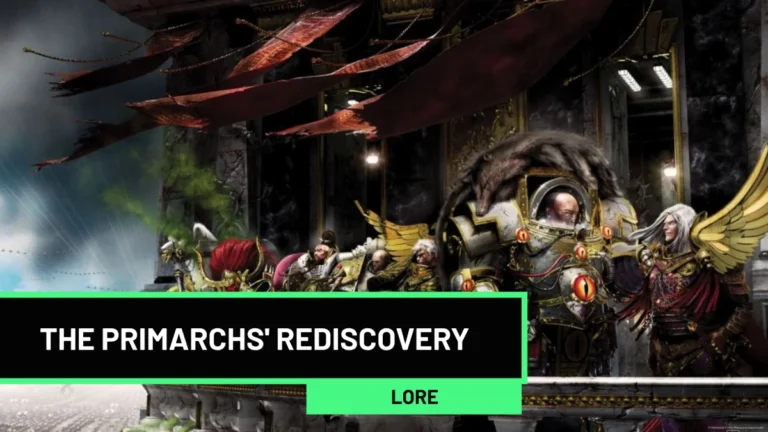In the grim darkness of the far future, the Emperor’s legendary campaign—the Great Crusade—was humanity’s last great hope for unification and survival in a war-torn galaxy. To lead this monumental effort, the Emperor didn’t just rely on the strength of humanity; He created something beyond it.
This grand vision manifested in twenty Primarchs—godlike beings crafted from the Emperor’s own genetic essence, each embodying a distinct element of his vision for the Imperium. Yet, as with many plans in the Warhammer 40,000 universe, not all went according to design.
The infamous scattering of the Primarchs by the Chaos Gods was a cataclysmic event. Their motives were clear: to disrupt the Emperor’s designs and gain influence over His sons.
These superhuman beings, each infused with charisma, power, and abilities that defied natural law, were cast across the galaxy, eventually landing on worlds far from Terra.
This scattering was the first act of defiance by Chaos against the Emperor’s vision and set the stage for the eternal conflict that would unfold across millennia.
As the Great Crusade unfurled, the Emperor set out to reunite with each of his lost sons, finding them one by one across distant worlds.
The order in which these Primarchs were discovered not only shaped the early stages of the Crusade but also set the emotional and political landscape that would later contribute to the Horus Heresy.
The rediscovery order, much like the Primarchs themselves, became a point of significance within Imperial history, marked by both triumphs and tragedies.
Let’s delve into the fascinating journey of the Emperor as he uncovered each Primarch, exploring how their rediscovery played out and the lore that surrounds their first meetings with their father.
The Primarchs’ Rediscovery Order
| Primarch | Legion Number | Legion Name | World of Rediscovery | Date of Rediscovery |
|---|---|---|---|---|
| Horus Lupercal | 16th | Luna Wolves / Sons of Horus | Cthonia | 801.M30 |
| Leman Russ | 6th | Space Wolves | Fenris | 819.M30 |
| REDACTED | 2nd | REDACTED | REDACTED | REDACTED |
| Ferrus Manus | 10th | Iron Hands | Medusa | 824.M30 |
| Fulgrim | 3rd | Emperor’s Children | Chemos | 830.M30 |
| Vulkan | 18th | Salamanders | Nocturne | 832.M30 |
| Rogal Dorn | 7th | Imperial Fists | Inwit | 835.M30 |
| Roboute Guilliman | 13th | Ultramarines | Macragge | 837.M30 |
| Magnus the Red | 15th | Thousand Sons | Prospero | 840.M30 |
| Sanguinius | 9th | Blood Angels | Baal | 843.M30 |
| Lion El’Jonson | 1st | Dark Angels | Caliban | 846.M30 |
| Perturabo | 4th | Iron Warriors | Olympia | 849.M30 |
| Mortarion | 14th | Death Guard | Barbarus | 854.M30 |
| Lorgar Aurelian | 17th | Word Bearers | Colchis | 857.M30 |
| Jaghatai Khan | 5th | White Scars | Mundus Planus | 865.M30 |
| Konrad Curze | 8th | Night Lords | Nostramo | 896.M30 |
| Angron | 12th | World Eaters | Nuceria | 899.M30 |
| Corvus Corax | 19th | Raven Guard | Deliverance | 922.M30 |
| REDACTED | 11th | REDACTED | REDACTED | REDACTED |
| Alpharius Omegon | 20th | Alpha Legion | Unknown | 981.M30 |
1. Horus Lupercal, the First Found
- World: Cthonia
- Discovery Date: 801.M30
- Legion: Luna Wolves, later known as the Sons of Horus
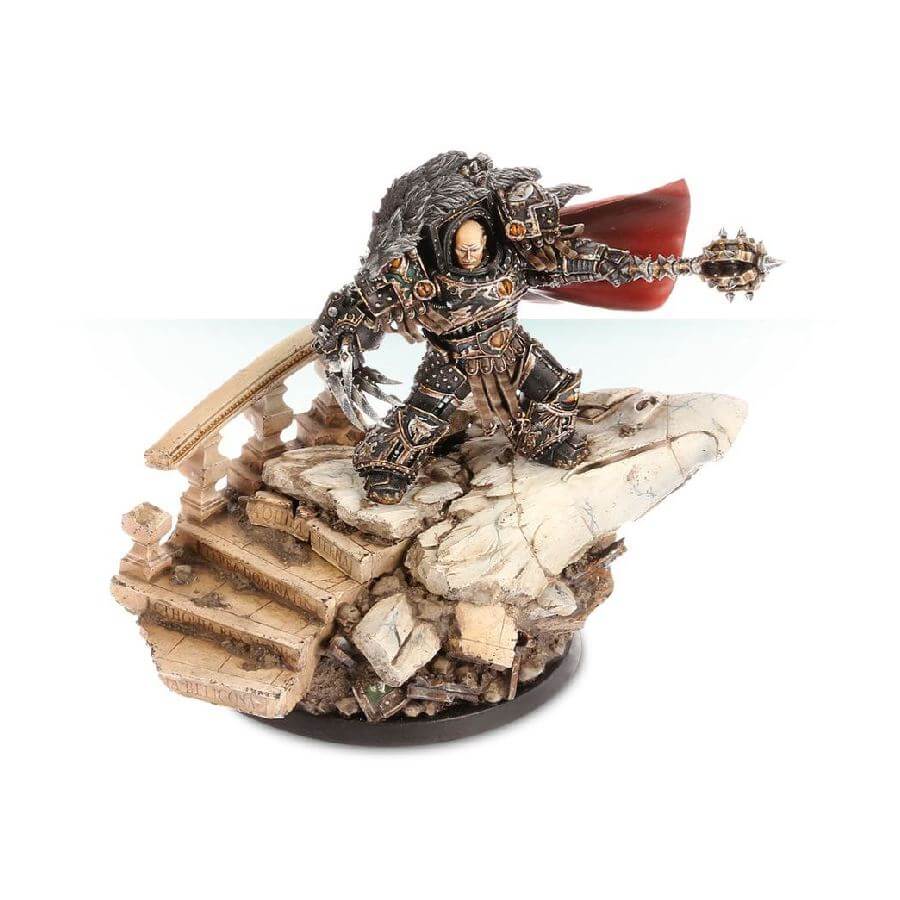
As the first rediscovered Primarch, Horus Lupercal holds a unique position in the history of the Imperium. Found on the war-ravaged world of Cthonia, a hostile place of brutal survival, Horus’s discovery marked a new dawn in the Emperor’s campaign.
Cthonia itself, a hive world close to Terra, was plagued by gang wars, violence, and an unyielding landscape of industrial decay. It was here that Horus was born—or perhaps, more accurately, where he arrived as an infant cast from the Warp.
The Emperor found Horus first, which gave him an extraordinary place not only within the Legion hierarchy but within the Emperor’s affections. Known from that point as the “Favored Son,” Horus’s early companionship with the Emperor meant he was, for a time, the only Primarch in the Emperor’s gaze.
This closeness cultivated a deep bond and sense of pride in Horus. In novels like Horus Rising by Dan Abnett, this relationship is vividly brought to life, showing how Horus not only led his legion—the Luna Wolves—but also served as a tactical confidant to the Emperor.
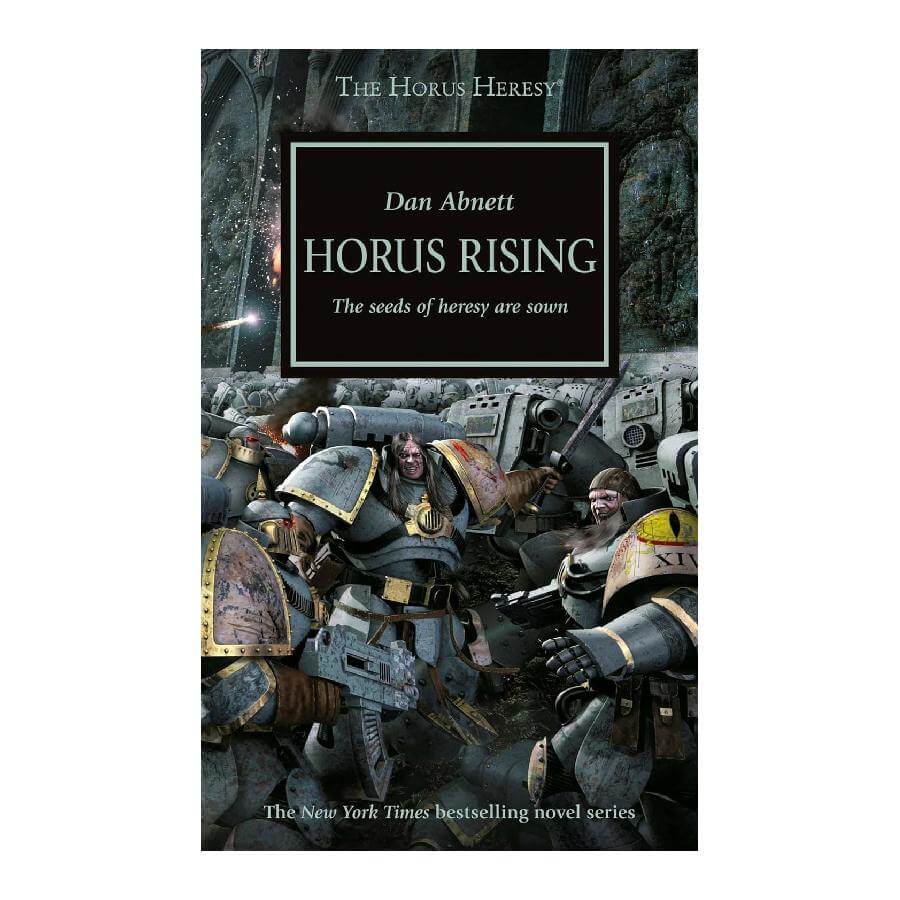
Horus’s fierce charisma and natural leadership made him a beloved figure among his legion and the wider Imperium.
He was a model Primarch, celebrated for his victories and tactical genius. His keen sense of loyalty to the Emperor defined him, setting a foundation for what would later be one of the most tragic downfalls in Imperial history.
As the first rediscovered son, Horus’s story is one of early triumph, the joy of reunification, and the unspoken tension that would eventually rupture during the Horus Heresy.
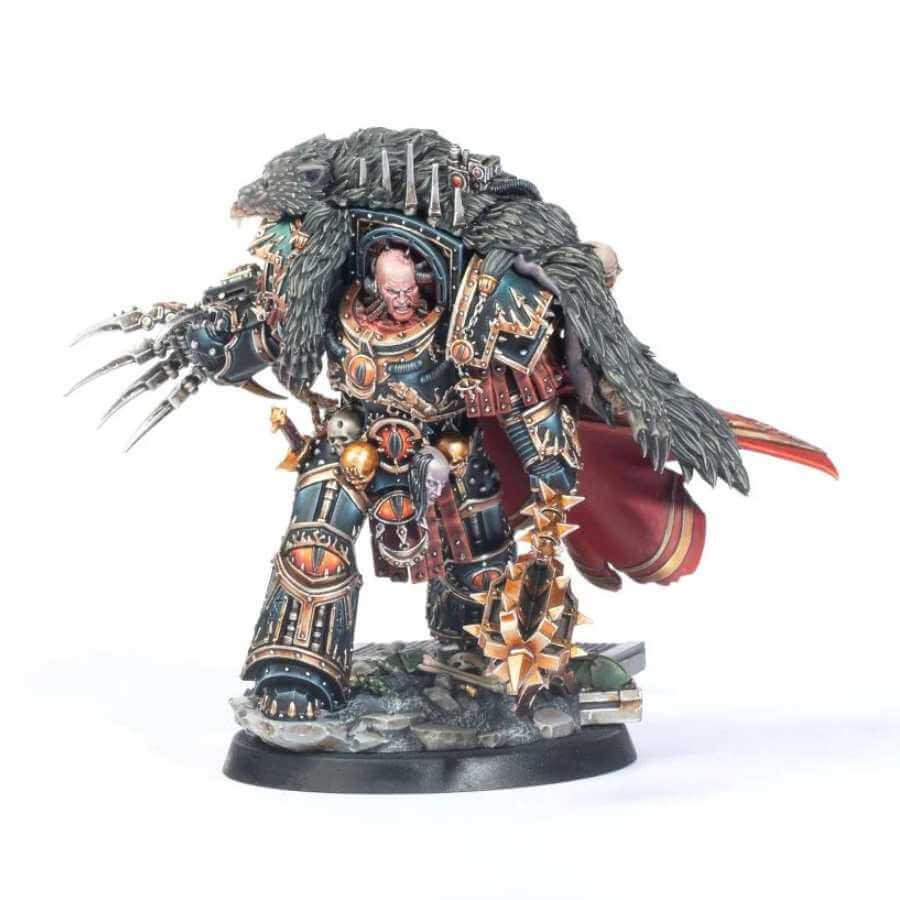
Significance in the Rediscovery Order:
Being the first to be found meant Horus had more time with the Emperor than any other Primarch, developing a relationship that transcended military command. This initial bond formed both the strengths and weaknesses that would define him.
When he was appointed Warmaster, many of his brothers harbored mixed feelings—some saw him as their equal, while others viewed him as a favored son privileged beyond measure. This underlying tension, as illustrated in the Horus Heresy series, became a fracture point, especially as Horus struggled with the expectations and burdens placed upon him.
The Emperor’s confidence in Horus was unmatched, but perhaps this favoritism planted the seeds of doubt and jealousy among the other Primarchs.
Horus, for all his greatness, would eventually feel the crushing weight of his position, which Chaos would later exploit, leading him down a path of treachery that would forever change the course of the Imperium.
2. Leman Russ, the Second Found
- World: Fenris
- Discovery Date: 819.M30
- Legion: Space Wolves
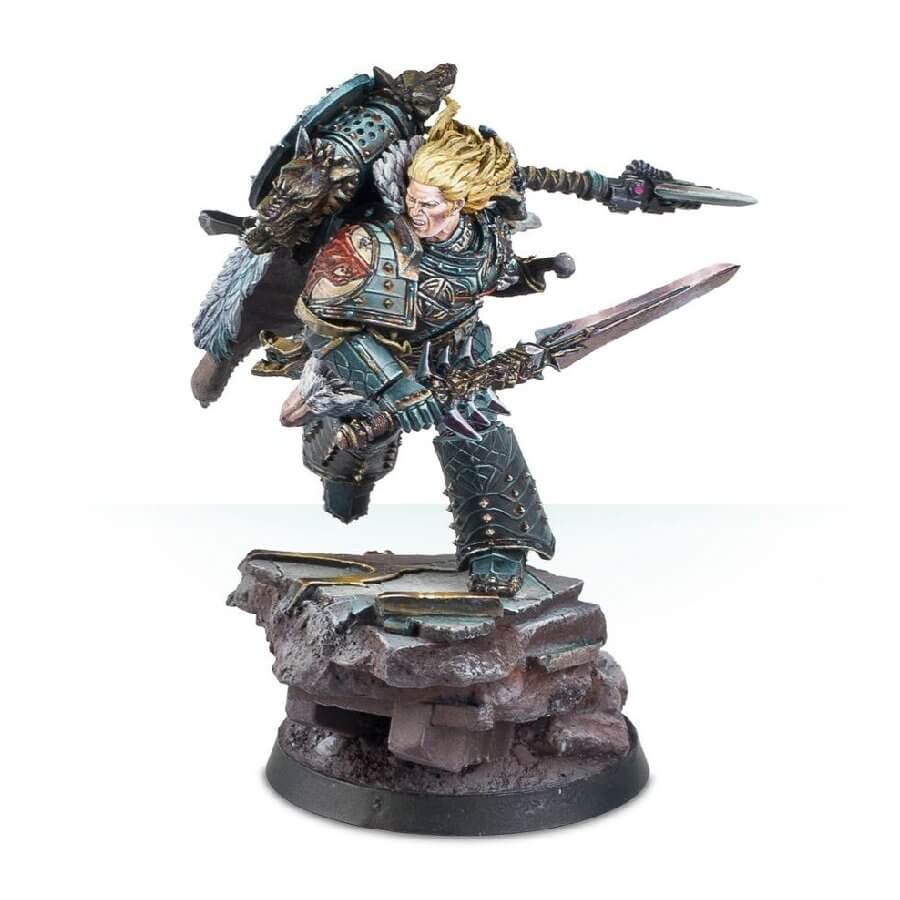
Unlike Horus, Leman Russ’s discovery on Fenris was marked by raw ferocity and a sense of untamed loyalty. Fenris, a death world characterized by constant environmental extremes, gave rise to a warrior culture steeped in survival and strength.
Raised among the tribes of Fenris, Russ became a legend even before his rediscovery. His warrior prowess, combined with a deep, almost primal loyalty, made him one of the most formidable and unique Primarchs.
When the Emperor arrived on Fenris, he was met not with awe, but with the challenge of a wolf-king who would only bend the knee after a hard-fought battle.
It’s said that the Emperor wrestled with Russ to prove his worth, a trial by combat that solidified their relationship.
In Prospero Burns by Dan Abnett, we get a glimpse of Russ’s complex character—fiercely loyal to the Emperor yet suspicious of other Primarchs and their intentions.
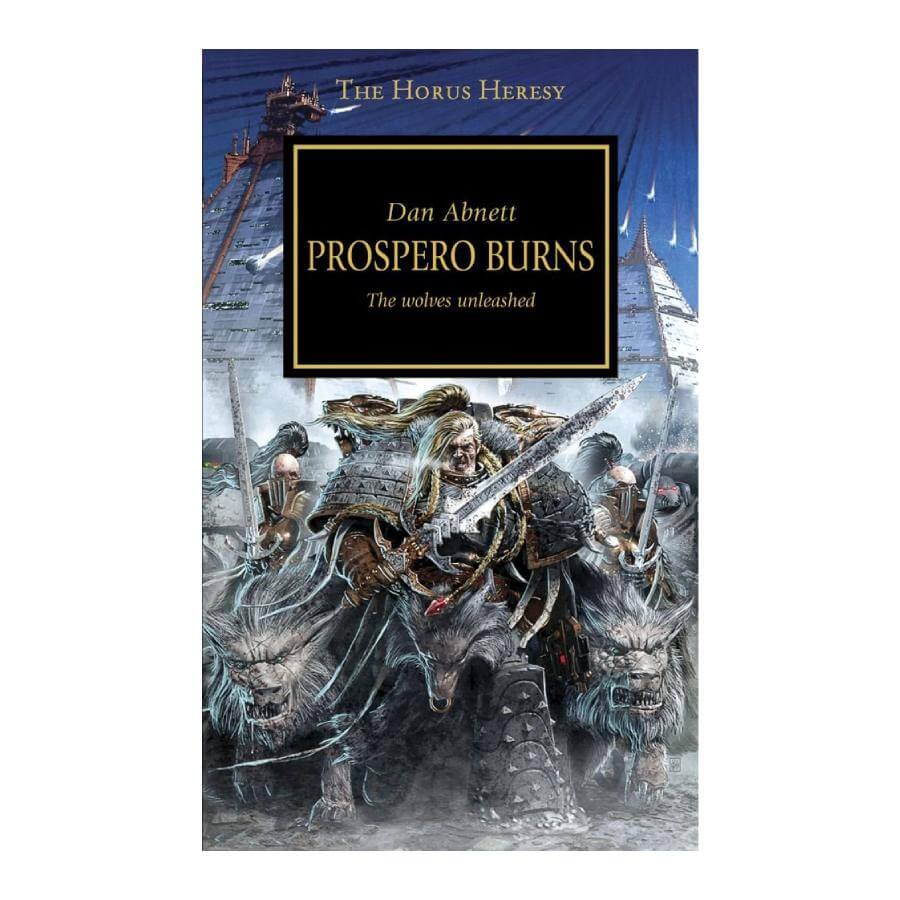
Russ’s legion, the Space Wolves, mirrored his temperament. Known for their wild yet disciplined combat style, the Space Wolves viewed themselves as guardians of honor and tradition within the Imperium. Russ’s discovery brought a new dimension to the Crusade, emphasizing not just strength but a warrior’s code of honor.
His respect for the Emperor was deep, and he became known as the “Emperor’s Executioner,” a role that would see him cross paths tragically with his brother Magnus in one of the Crusade’s most defining conflicts.
Significance in the Rediscovery Order:
Being the second found, Russ was in many ways a foil to Horus. While Horus operated with charisma and diplomacy, Russ embodied straightforward ferocity and unyielding loyalty. This contrast highlighted the diversity within the Primarchs and set the tone for the complex relationships between them.
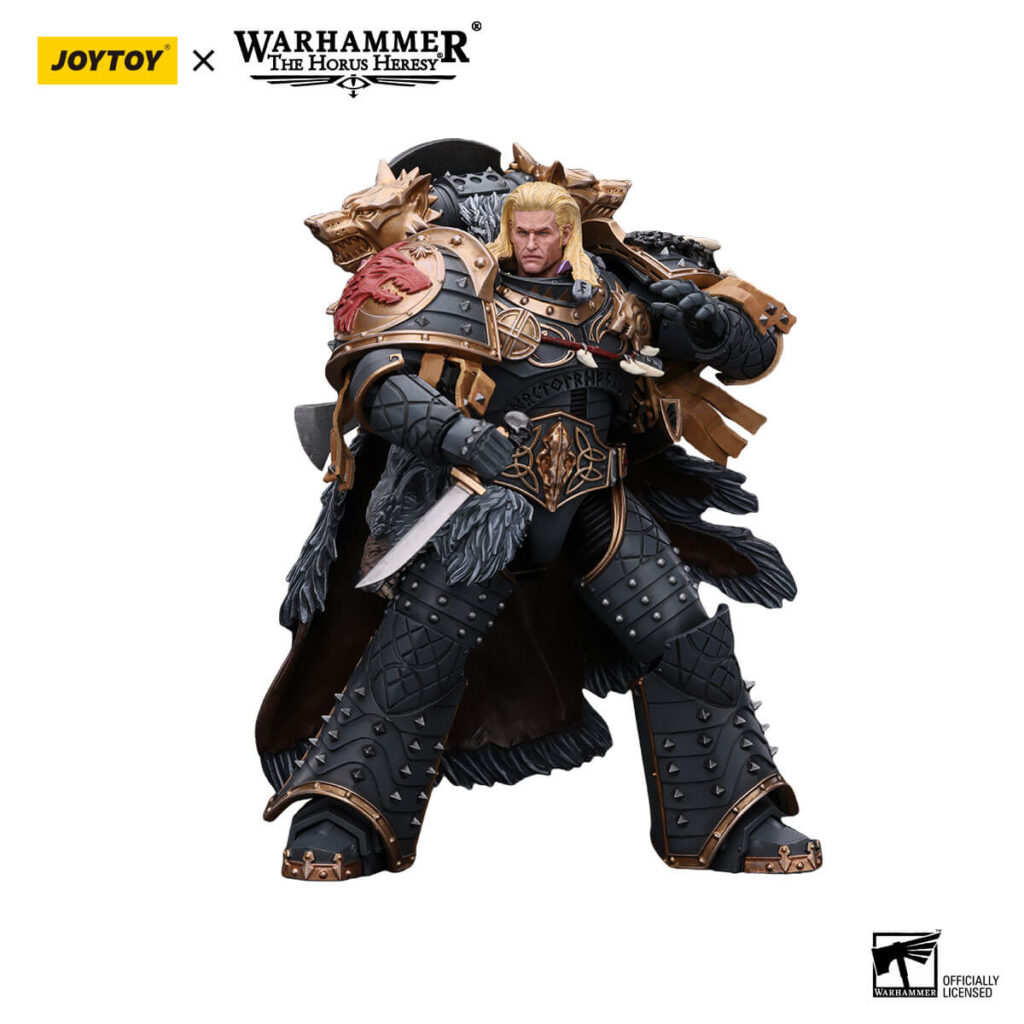
Russ, for example, distrusted the sorcery of Magnus the Red, a sentiment that would later erupt into the burning of Prospero—a battle marked by tragedy and irreversible division among the Primarchs.
Russ’s finding also meant he was a foundational pillar in the Emperor’s court. His devotion to the Emperor was never in question, and his fierce protection of Imperial ideals would later set him at odds with other Primarchs whose methods diverged from his.
3. Ferrus Manus, the Third Found
- World: Medusa
- Discovery Date: 824.M30
- Legion: Iron Hands
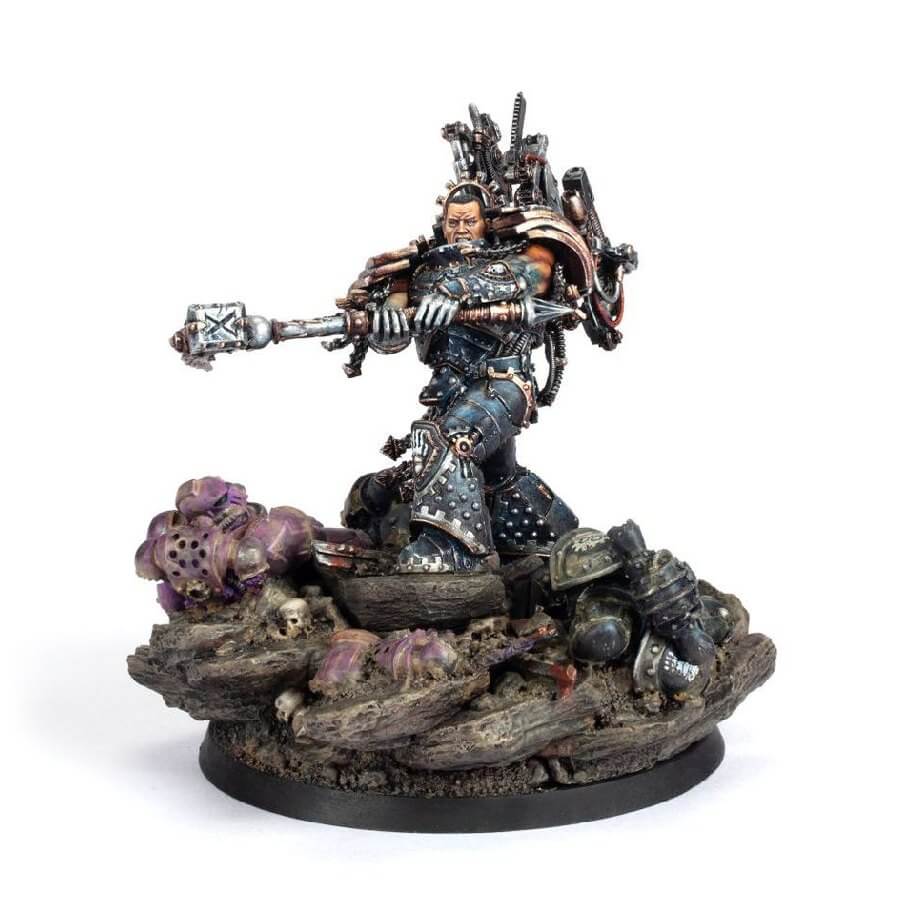
Ferrus Manus, the Gorgon, known for his unbreakable will and iron resolve, was discovered on Medusa, a harsh and volcanic world teeming with nomadic clans and brutal landscapes.
From a young age, Ferrus possessed an unrelenting drive for self-improvement. Medusa shaped him into a warrior of unparalleled strength and determination, values he later instilled into his Iron Hands Legion.
One of Ferrus’s defining moments came from his encounter with an alien, serpent-like beast in the depths of Medusa’s volcanic caves. In a battle that tested both his endurance and resilience, Ferrus slew the creature and plunged his arms into its molten metal blood. This act fused Ferrus’s hands with a layer of living silver, forever marking him with the trait that earned him his name.
The Emperor found Ferrus shortly after this legendary act, impressed by his rugged demeanor and unwavering focus. Ferrus and the Emperor had a unique relationship—built more on mutual respect than familial warmth.
Ferrus viewed the Emperor’s Great Crusade as a noble cause but one that required discipline, strength, and an unyielding commitment to victory.
Must Read: Ferrus Manus: Gorgon of Medusa from the Primarchs series provides a fascinating dive into Ferrus’s stoic personality and his strict adherence to his principles.
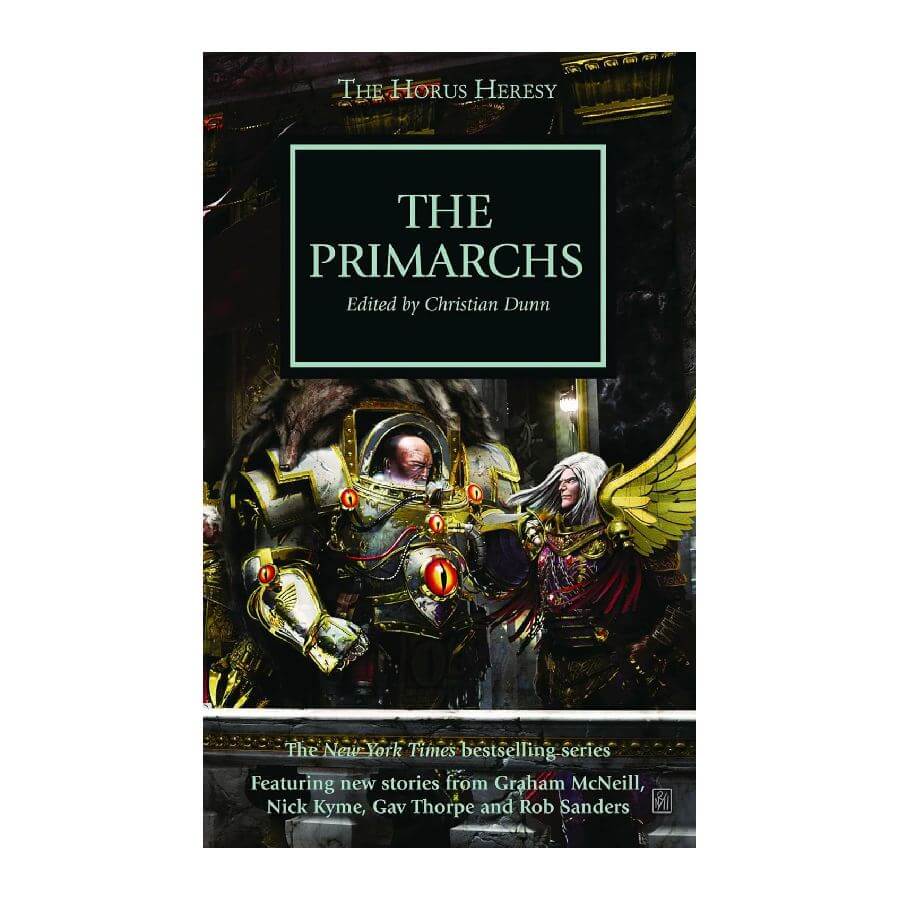
Significance in the Rediscovery Order:
Ferrus’s revelation gave the Imperium a commander with a ruthless edge, dedicated to weeding out weakness wherever he saw it. This philosophy would ultimately make him a staunch ally of Horus in the early years of the Crusade.
However, it also left him vulnerable to Horus’s charisma, as Horus was able to appeal to Ferrus’s values of strength and unity, setting the stage for the tragic events of the Heresy.
4. Fulgrim, the Fourth Found
- World: Chemos
- Discovery Date: 830.M30
- Legion: Emperor’s Children
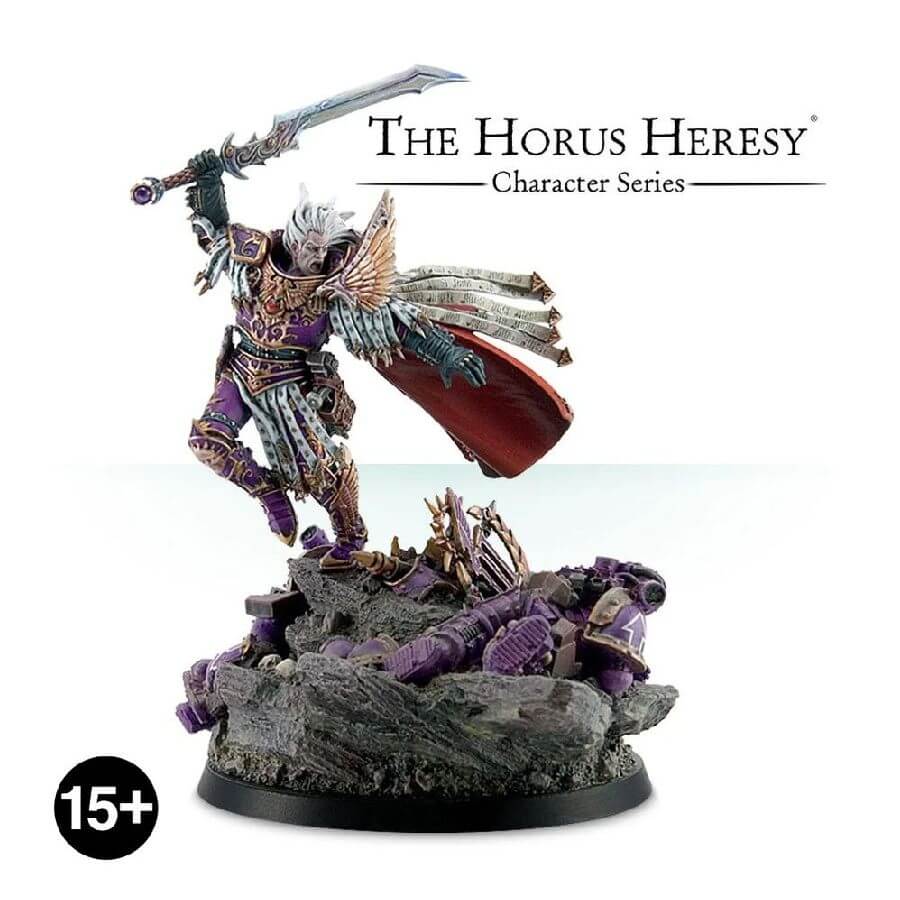
Fulgrim’s story begins on Chemos, an industrial world plagued by scarcity and drudgery. Unlike the battle-hardened worlds of his brothers, Chemos was a world of labor, where survival required ingenuity and resourcefulness.
Fulgrim, however, brought beauty and vision to his people, becoming a beacon of hope amid their struggles. As a leader, he focused on improving the lives of those around him, instilling in them a sense of pride and ambition.
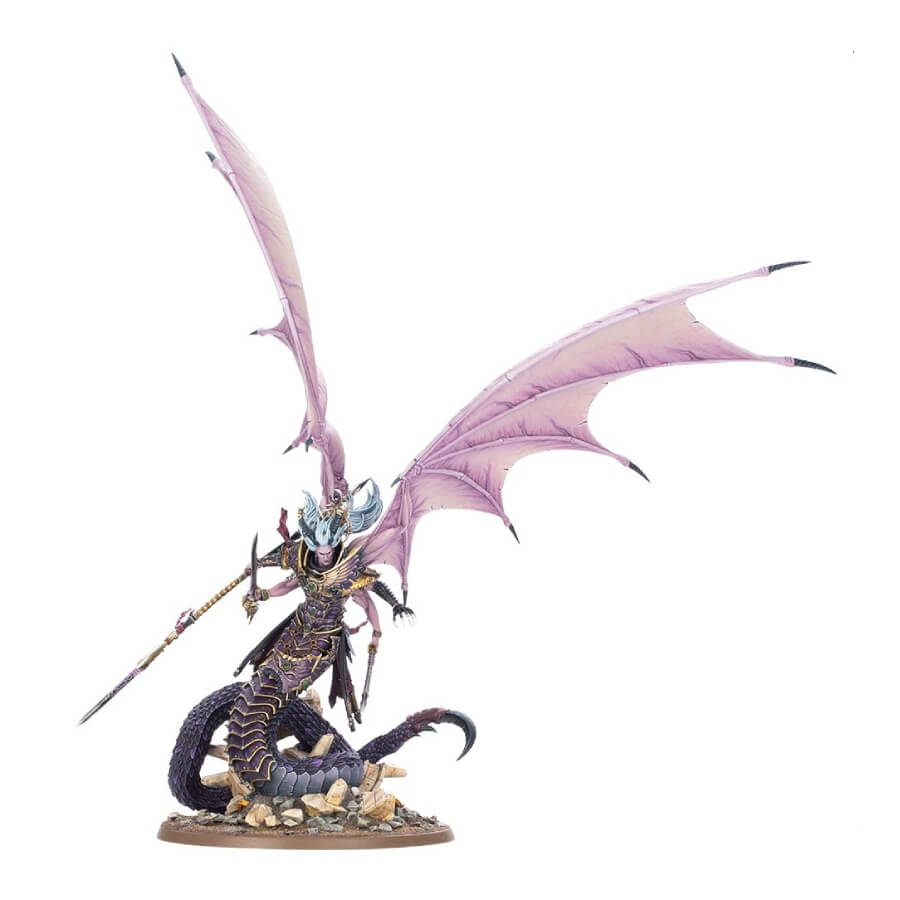
When the Emperor found Fulgrim, he saw in him the idealist—the son who pursued perfection in all things. Fulgrim’s affinity for the arts and culture was a stark contrast to the harsh pragmatism of some of his brothers.
His Legion, the Emperor’s Children, mirrored this pursuit of perfection, striving to embody the highest standards of martial prowess and personal achievement.
Must Read: In Fulgrim by Graham McNeill, we see this ambition evolve into a tragic flaw, as Fulgrim’s desire for perfection becomes a gateway for corruption.
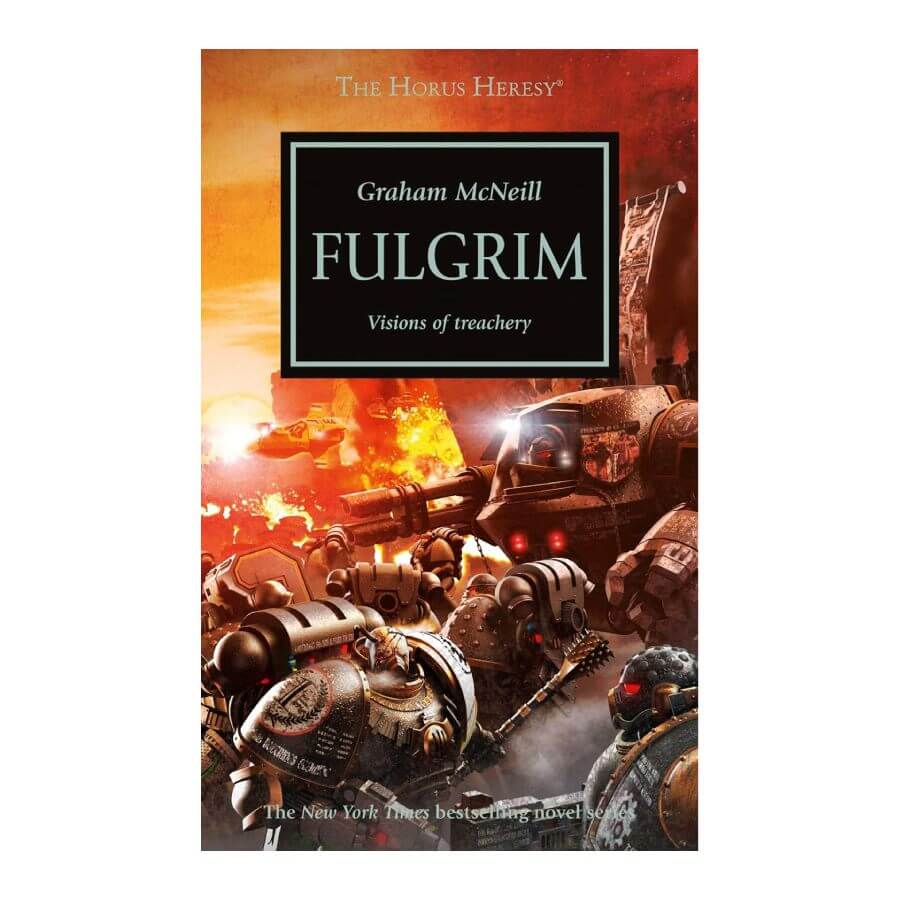
Significance in the Rediscovery Order:
Fulgrim’s early rediscovery allowed him to establish close bonds with Horus and Ferrus Manus. His admiration for Horus grew over time, especially as he viewed him as the epitome of their father’s ideal warrior.
Fulgrim’s tragic journey from noble idealism to the darker realms of excess was set in motion by this deep-seated desire to attain greatness—a desire that would later lead him to the service of Slaanesh, the Chaos God of excess.
5. Vulkan, the Fifth Found
- World: Nocturne
- Discovery Date: 832.M30
- Legion: Salamanders
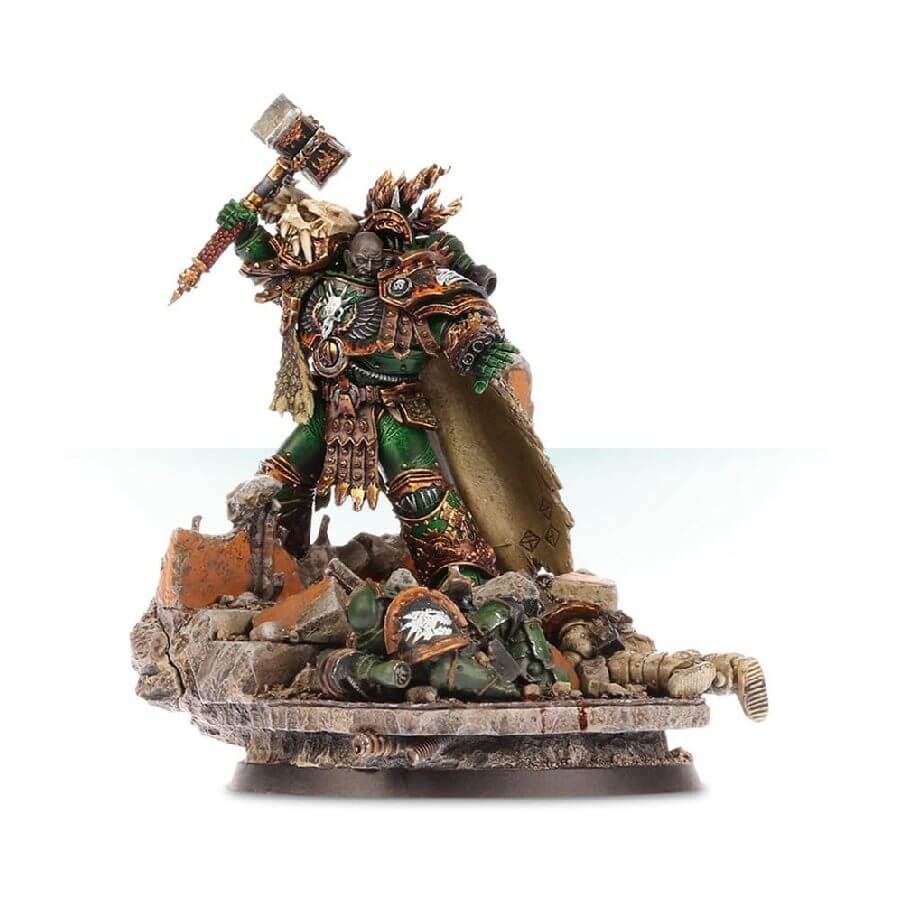
Vulkan’s story is one of resilience and compassion. Raised on Nocturne, a world plagued by volcanic eruptions and monstrous predators, Vulkan grew up in a culture that valued community and the protection of the weak.
Unlike his more stoic brothers, Vulkan is remembered for his empathy and kindness—traits that endeared him to his people and the Salamanders Legion he would eventually lead.
When the Emperor got reunited Vulkan, he recognized a Primarch with a deep sense of duty to humanity. The Emperor saw in Vulkan not only a warrior but a guardian, a protector of the innocent.
Vulkan’s loyalty to the Emperor was fierce, and he approached the Great Crusade with a resolve to bring justice and peace to the galaxy.
Must Read: Novels like Vulkan Lives by Nick Kyme showcase his unbreakable spirit and his ability to endure even the most agonizing trials, including his encounters with his traitorous brothers.
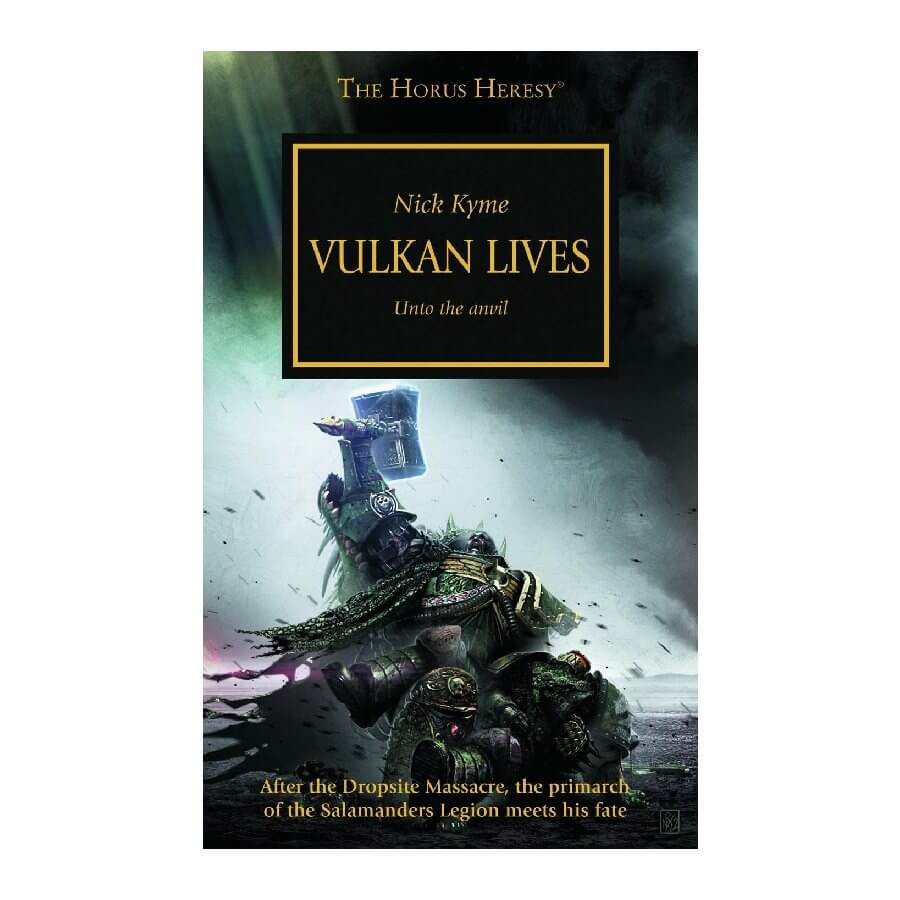
Significance in the Rediscovery Order:
Vulkan’s rediscovery infused the Crusade with a more compassionate outlook. His influence helped temper the Imperium’s approach in certain sectors, balancing the ruthlessness of Ferrus and the ambition of Fulgrim. Yet, his kindness would also make him a target in the darker times ahead, as his ideals clashed with the brutal realities of war and betrayal.
6. Rogal Dorn, the Sixth Found
- World: Inwit
- Discovery Date: 835.M30
- Legion: Imperial Fists
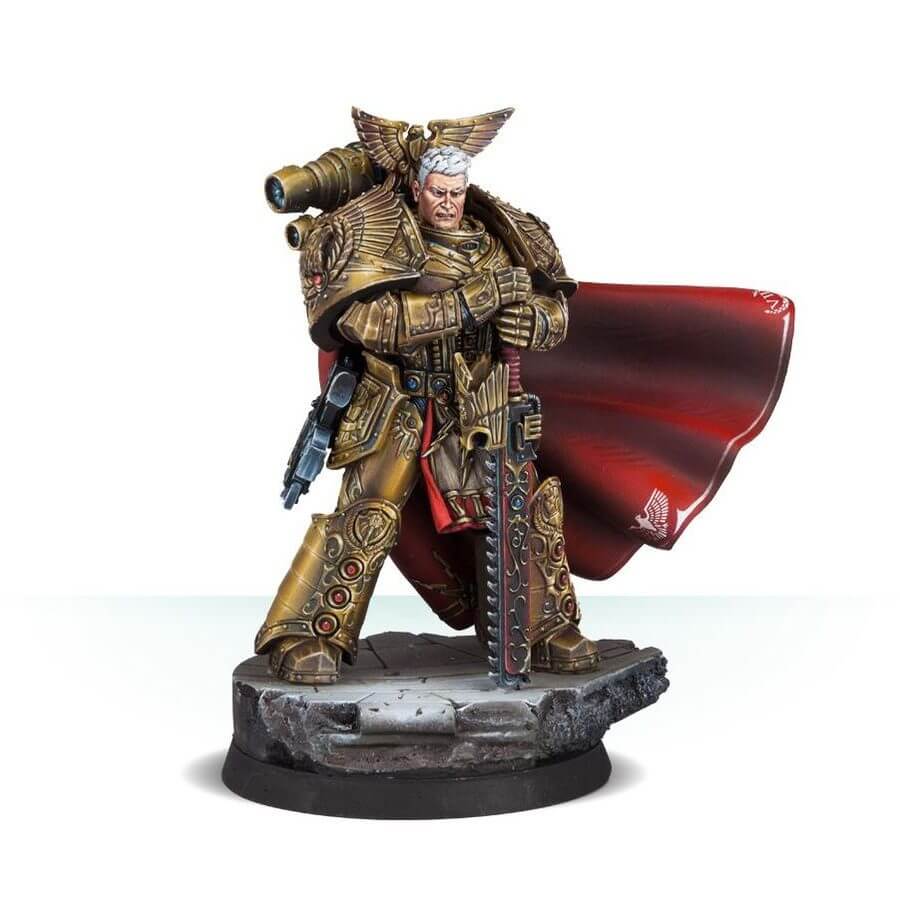
Rogal Dorn was found on the icy fortress world of Inwit, where survival demanded endurance and a strict adherence to order.
Dorn was raised among the ice-sculpted fortresses of his people, where he learned the values of resilience, loyalty, and unbreakable fortitude.
Dorn’s personality was as rigid as his upbringing; he was unyielding, and once he committed to a cause, he saw it through with a relentless focus.
The Emperor was impressed by Dorn’s tactical brilliance and entrusted him with one of the most critical roles in the Crusade—the defense of Terra. Dorn’s Imperial Fists became the bulwark of the Imperium, renowned for their defensive capabilities.
Must Read: The Last Wall by David Annandale provides insights into Dorn’s unwavering loyalty and his sense of duty, qualities that would later place him at the heart of the Siege of Terra.
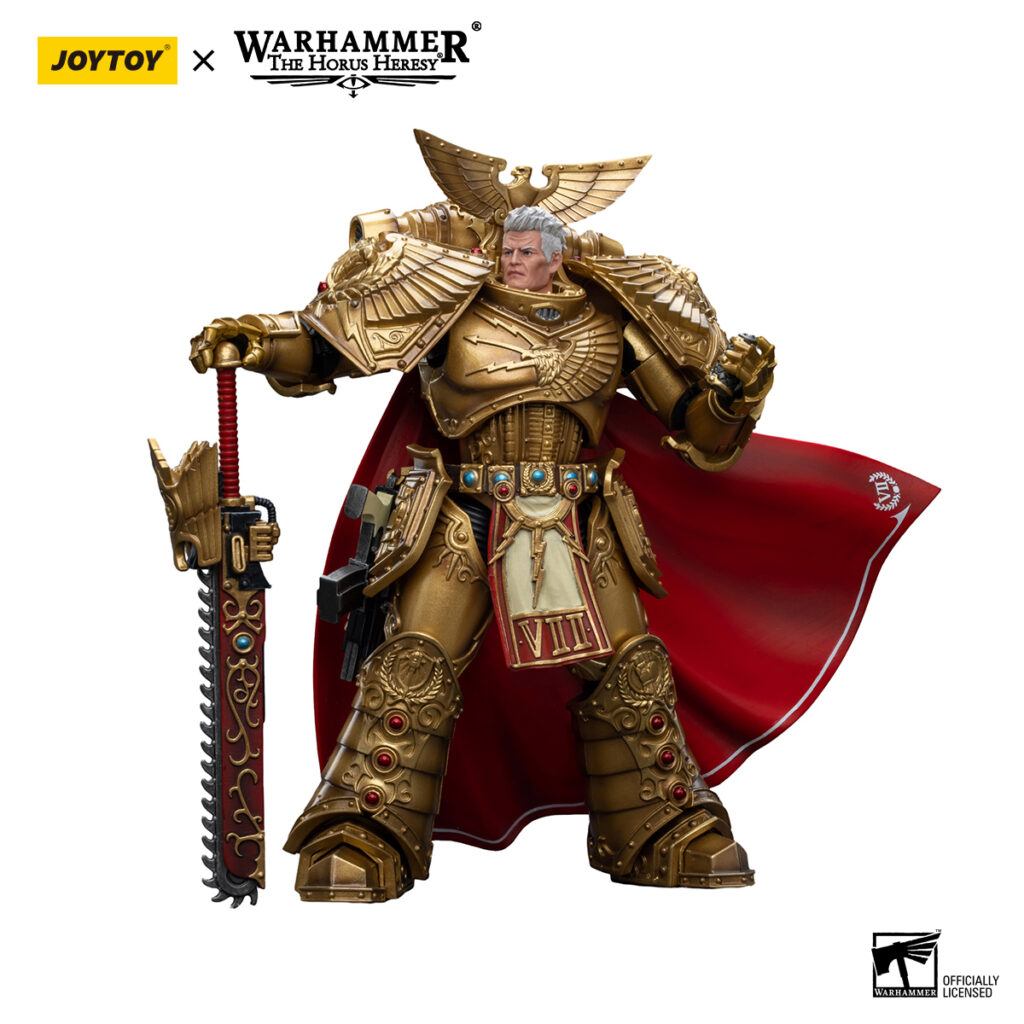
Significance in the Rediscovery Order:
Dorn’s early rediscovery meant that the Emperor could begin building Terra’s defenses long before the Heresy loomed.
Dorn’s unwavering dedication and strategic mind gave the Imperium a protector in its darkest hours, but his rigidity also brought him into conflict with more flexible brothers like Alpharius and Jaghatai Khan.
Dorn’s rediscovery was a cornerstone in the Imperium’s defenses, setting him up as the ultimate defender during the final days of the Heresy.
7. Roboute Guilliman, the Seventh Found
- World: Macragge
- Discovery Date: 837.M30
- Legion: Ultramarines
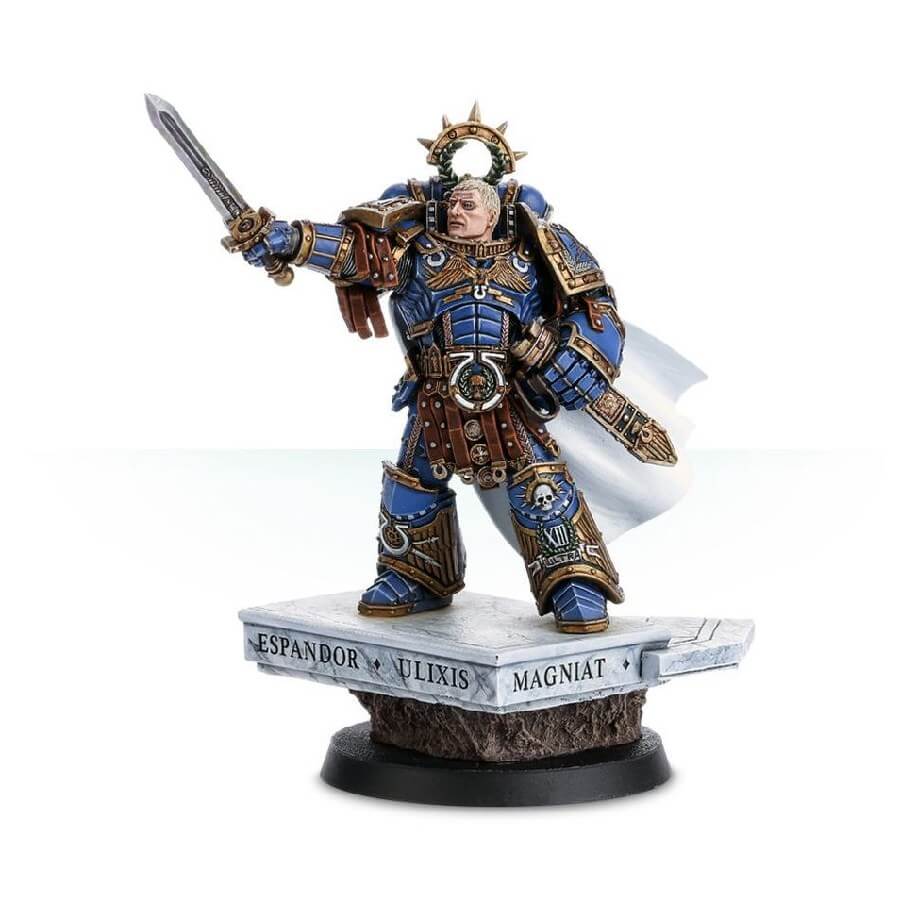
Roboute Guilliman, the statesman Primarch, was discovered on Macragge, a world governed by logic, order, and prosperity. Unlike many of his brothers’ homeworlds, Macragge was a place of structured society and efficient governance.
Guilliman was raised with a vision for stability and harmony, and he quickly proved himself to be a brilliant leader, not only on the battlefield but also as an administrator.
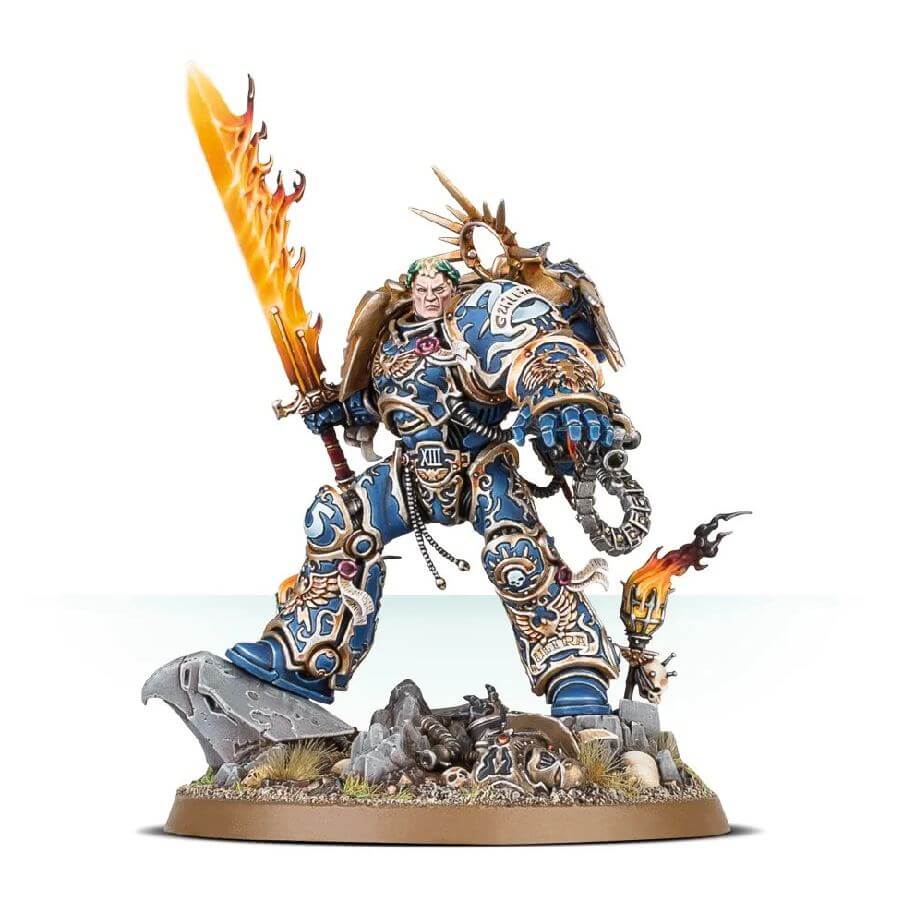
When the Emperor met Guilliman, he saw in him a leader who could do more than just conquer—he could build. Guilliman’s Ultramarines would go on to be the largest and most stable Legion, embodying his vision for a structured, efficient Imperium.
Must Read: The Unremembered Empire by Dan Abnett delves into Guilliman’s efforts to hold the Imperium together even as it fractured, portraying his pragmatism and sense of duty.
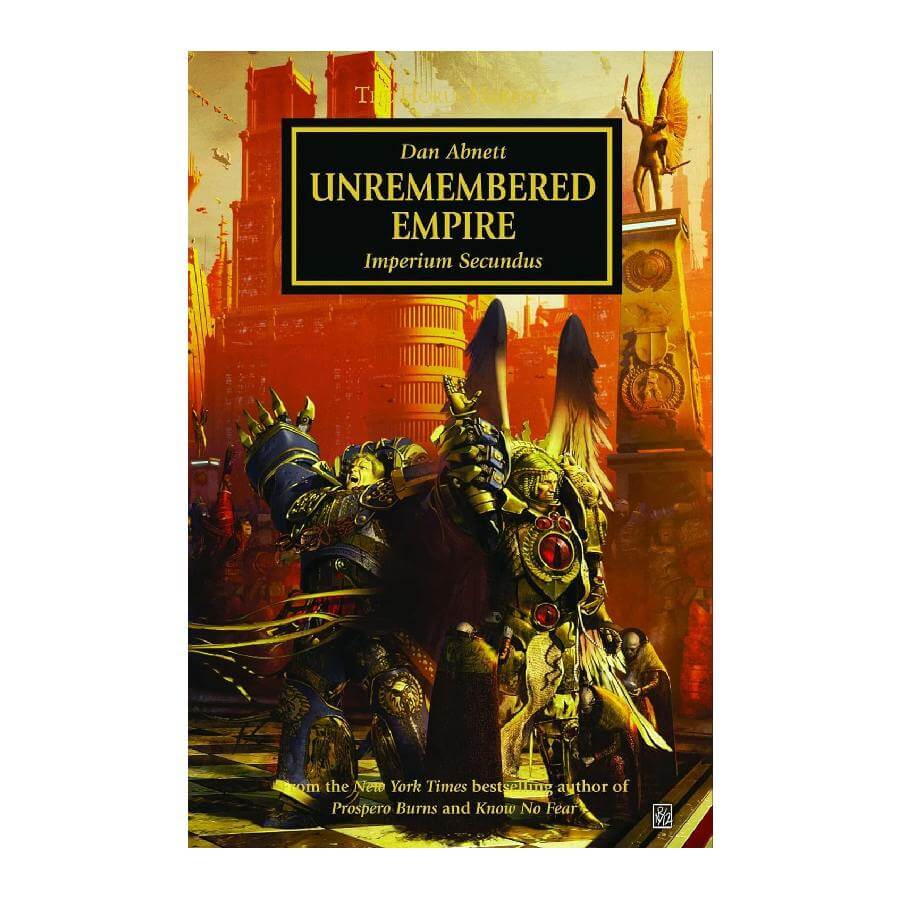
Significance in the Rediscovery Order:
Guilliman’s early discovery gave the Imperium a leader capable of overseeing not only military campaigns but also the infrastructure needed to hold conquered worlds. His focus on order made him a stabilizing force, especially when chaos descended during the Heresy.
Guilliman’s rediscovery was a turning point in the Crusade’s approach, as he provided the administrative backbone that would later allow the Imperium to endure through its darkest times.
8. Magnus the Red, the Eighth Found
- World: Prospero
- Discovery Date: 840.M30
- Legion: Thousand Sons
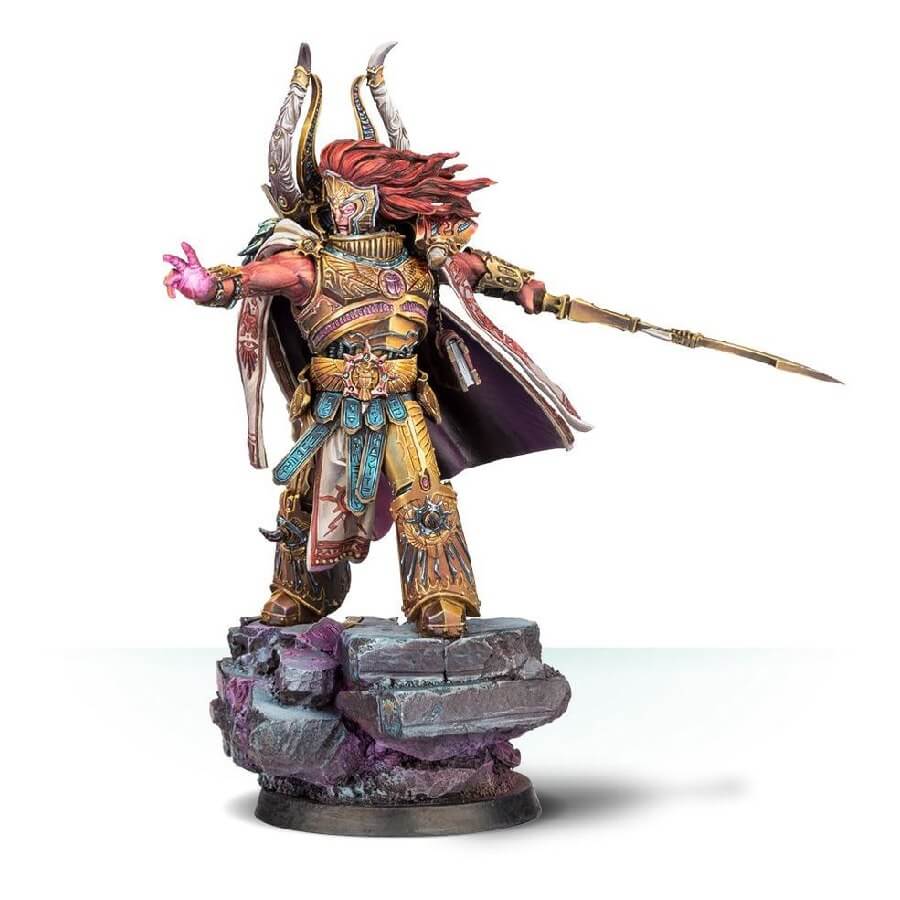
Magnus the Red, the Scholar-King, was found on Prospero, a world steeped in knowledge, psychic power, and mysticism. Prospero was a planet of scholars and sorcerers, its society focused on the pursuit of wisdom and understanding of the Warp.
Magnus, with his towering intellect and prodigious psychic abilities, became both ruler and protector of Prospero, fostering a culture of enlightenment and spiritual exploration.
The Emperor and Magnus shared a unique bond over their psychic gifts; Magnus was the only Primarch capable of communicating with his father across vast distances through the Warp.
This telepathic connection created an affinity between them unlike any other Primarch shared with the Emperor.
Magnus viewed the Emperor not only as a father but as a mentor and guide in the mysteries of psychic power.
Must Read: A Thousand Sons by Graham McNeill delves into Magnus’s devotion to knowledge and his complex relationship with the Emperor, painting a portrait of a son whose loyalty would lead to his undoing.
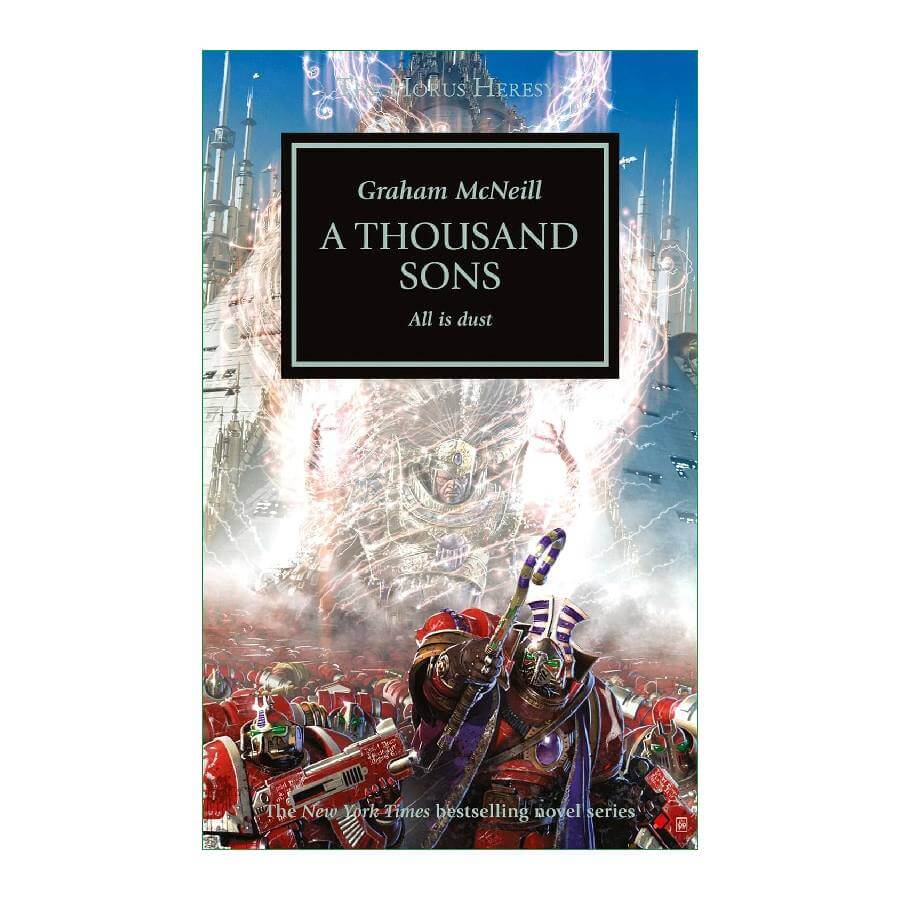
Significance in the Rediscovery Order:
Magnus’s rediscovery marked the introduction of psychic mastery into the Imperium’s arsenal. However, his fascination with the Warp, encouraged by his father at first, ultimately became his curse.
The Emperor’s later prohibition against sorcery created an ideological divide between them, one that would tragically culminate in the burning of Prospero and Magnus’s eventual fall.
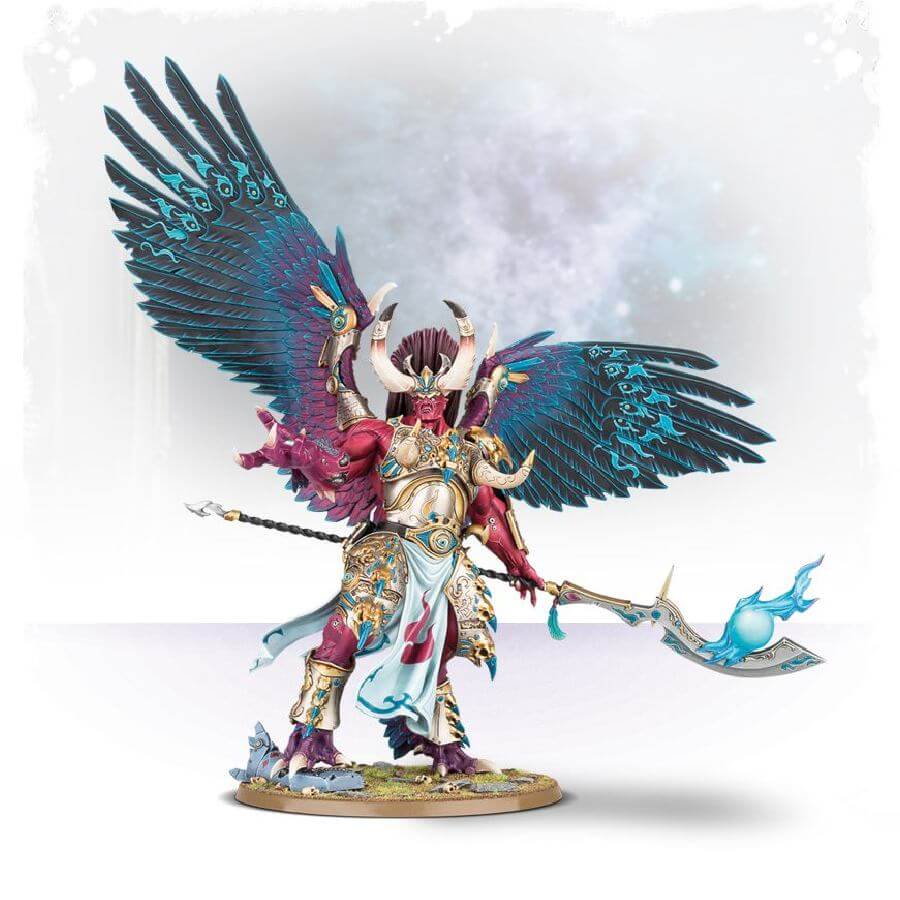
Magnus’s finding fostered the hope of a psychic future for humanity, but his downfall showcased the dangers that lurked within the Warp’s power.
9. Sanguinius, the Ninth Found
- World: Baal
- Discovery Date: 843.M30
- Legion: Blood Angels
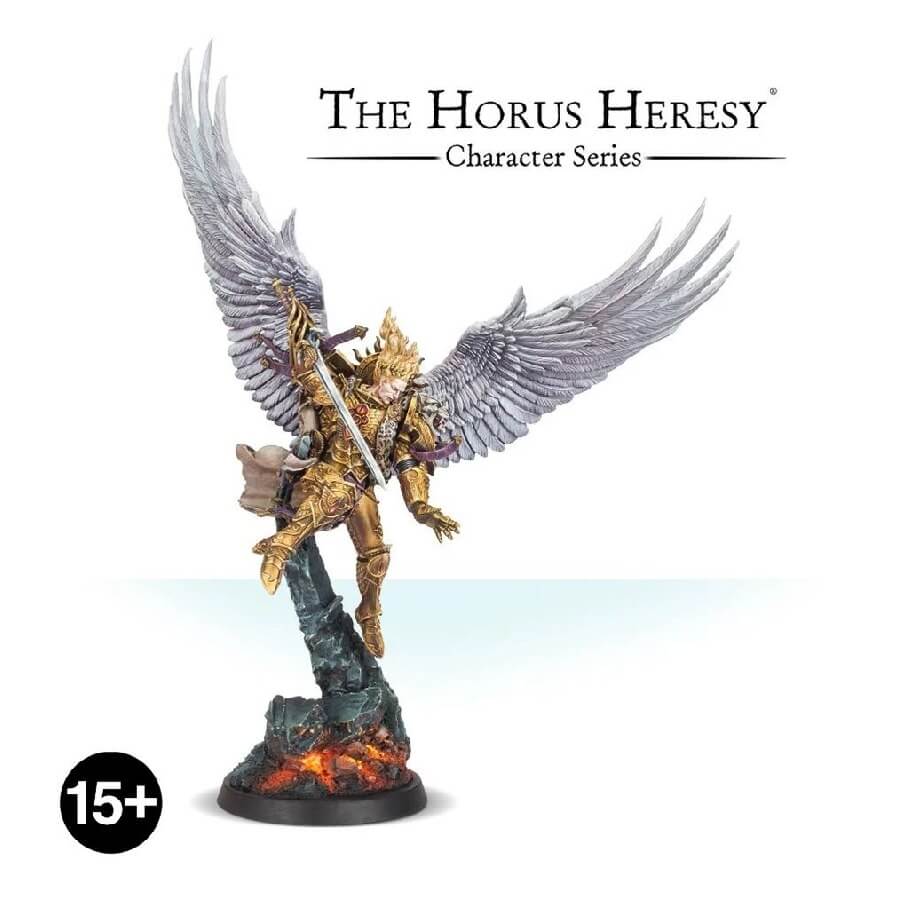
Sanguinius, the Angel, was found on the irradiated, desolate world of Baal. Born with angelic wings and an almost otherworldly beauty, Sanguinius’s arrival was seen as a blessing by his people, who dwelled in the radioactive wastelands of Baal.
The people of Baal revered Sanguinius as a savior, and he led them with compassion, battling mutated tribes and bringing a sense of hope to an otherwise grim world.
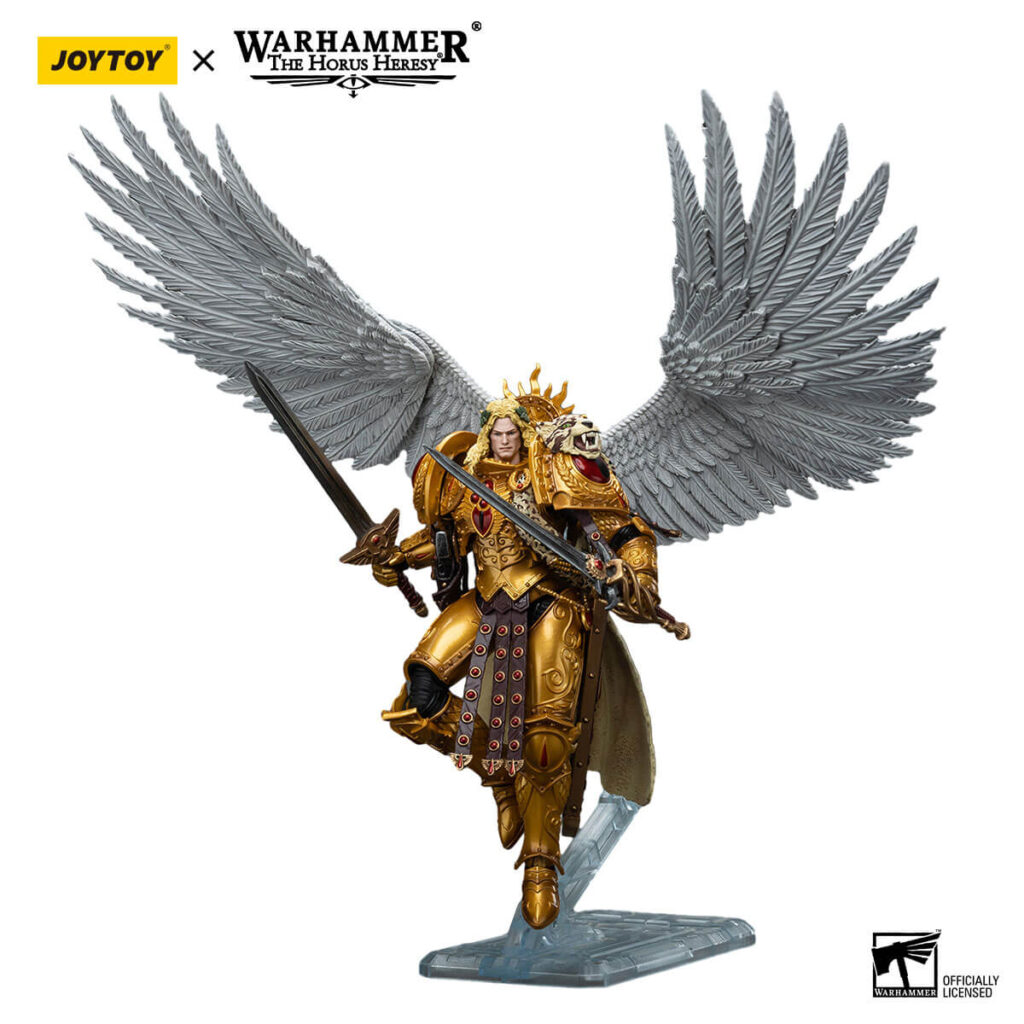
The Emperor found Sanguinius and saw in him both a warrior and an inspiration. Sanguinius’s charisma, purity, and dedication to his Legion, the Blood Angels, made him beloved not only by his sons but by the entire Imperium.
Must Read: In Fear to Tread by James Swallow, Sanguinius’s purity and vision for the Imperium are explored in depth, contrasting his idealism with the darkness that would eventually consume many of his brothers.
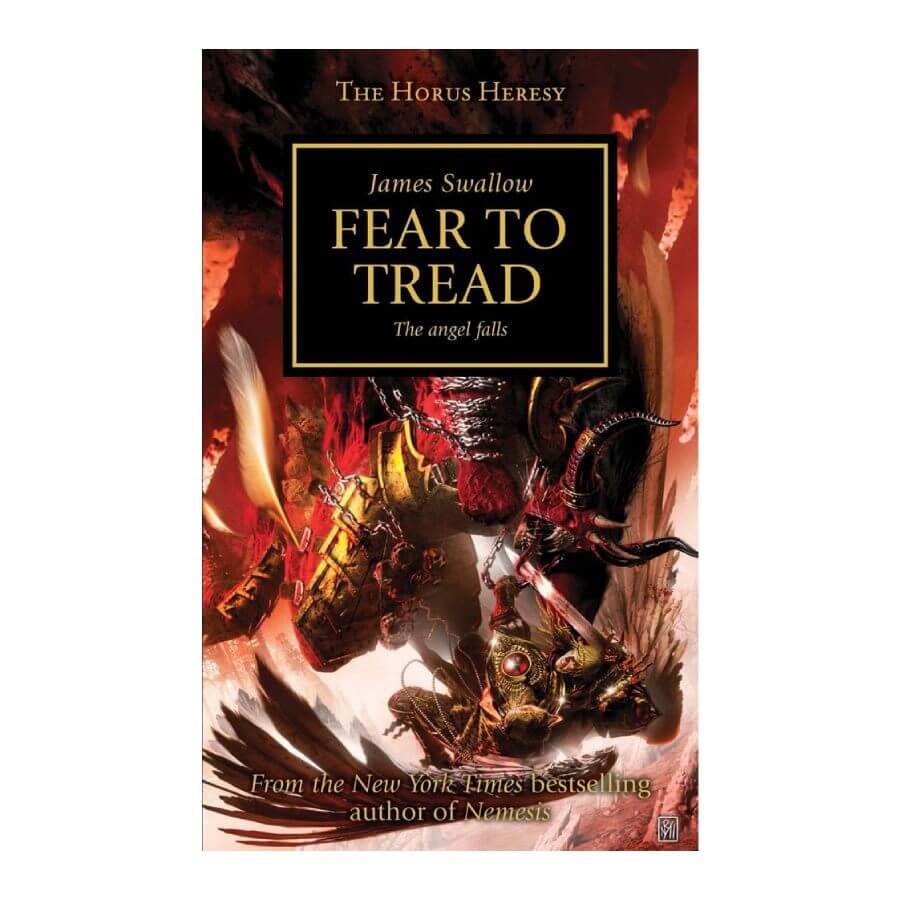
Significance in the Rediscovery Order:
Sanguinius’s rediscovery brought a sense of hope and purpose to the Crusade. His presence was a reminder of what humanity could aspire to, even in the darkest of times.
As one of the few Primarchs who resisted the corrupting influence of Chaos, Sanguinius’s rediscovery gave the Emperor a son who would embody the purity and nobility that the Imperium aspired to.
His tragic death during the Siege of Terra would later become a symbol of ultimate sacrifice for the Imperium’s cause.
10. Lion El’Jonson, the Tenth Found
- World: Caliban
- Discovery Date: 846.M30
- Legion: Dark Angels
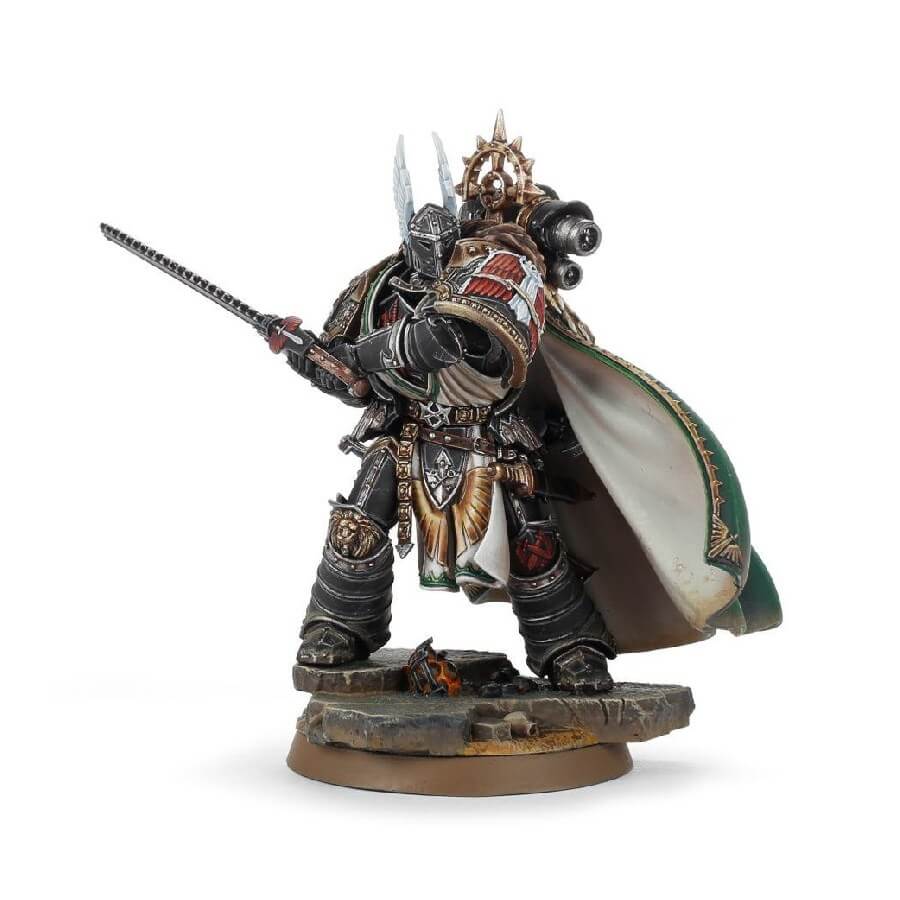
Lion El’Jonson, known as “The Lion,” was found on the densely forested and monster-infested world of Caliban. Raised among knights and warriors dedicated to hunting down monstrous creatures, the Lion developed a tactical mind and a fierce sense of duty.
His arrival on Caliban was a mystery, and the Lion spent his early years learning to survive alone in the wilds before being adopted by the Knights of Caliban.
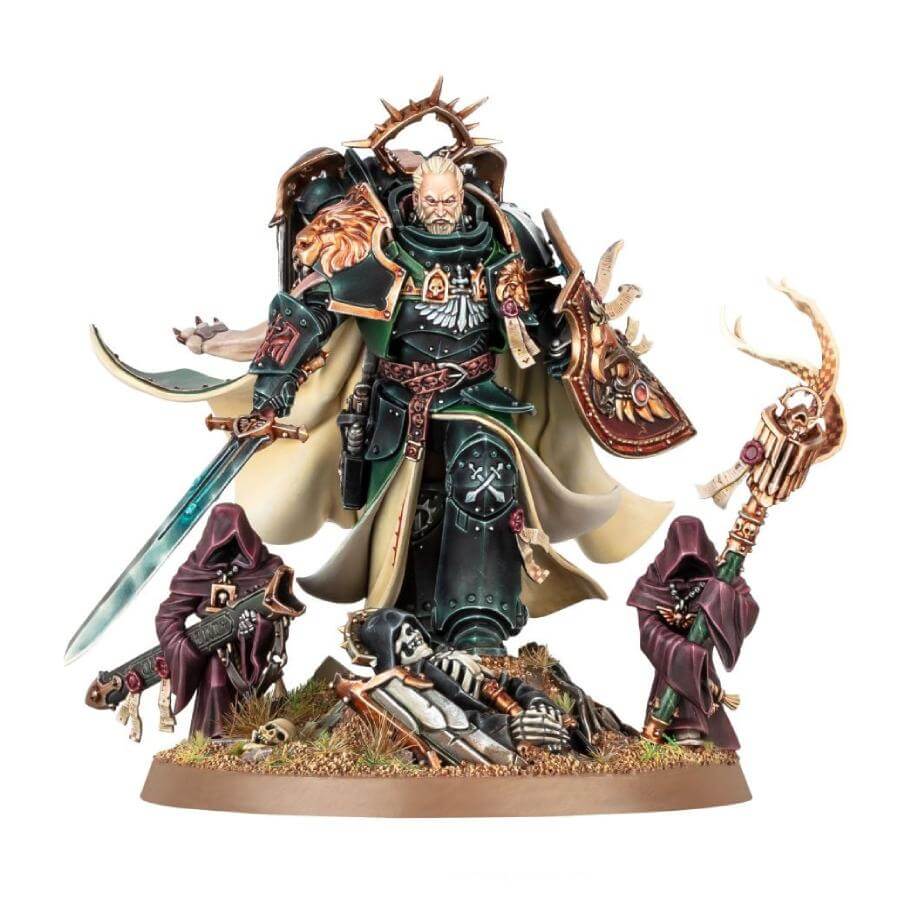
When the Emperor found him, he saw in the Lion a warrior who possessed a razor-sharp intellect and an unyielding commitment to duty. The Lion was distant, stoic, and at times difficult to understand—a trait that often created tension with his brothers.
Must Read: In Descent of Angels and Angels of Caliban, we see the Lion’s complex personality and his often cold relationship with his Legion, the Dark Angels, who respected him yet struggled with his aloof nature.
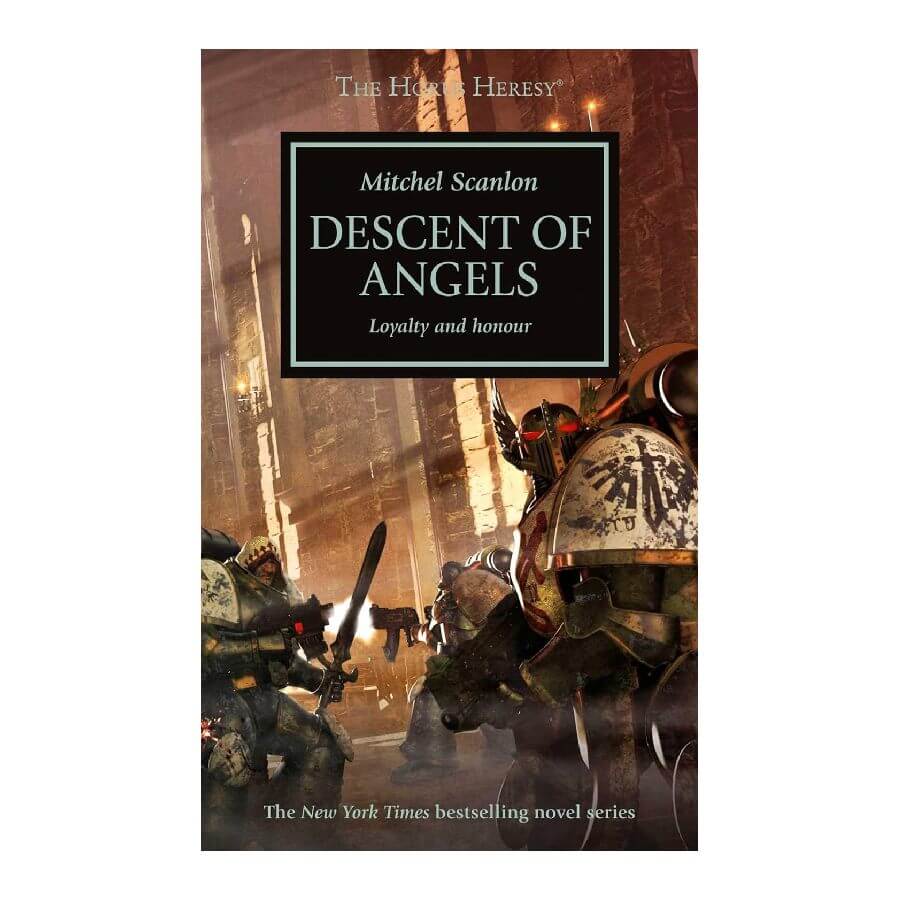
Significance in the Rediscovery Order:
The Lion’s rediscovery gave the Imperium one of its most formidable tacticians. However, his secretive nature also sowed seeds of mistrust, particularly with Primarchs like Leman Russ and Curze.
The Lion’s stoicism and adherence to duty made him one of the Emperor’s most reliable commanders, yet his secrecy and occasional ruthlessness would later lead to rifts, not only within the Imperium but also within his own Legion.
11. Perturabo, the Eleventh Found
- World: Olympia
- Discovery Date: 849.M30
- Legion: Iron Warriors
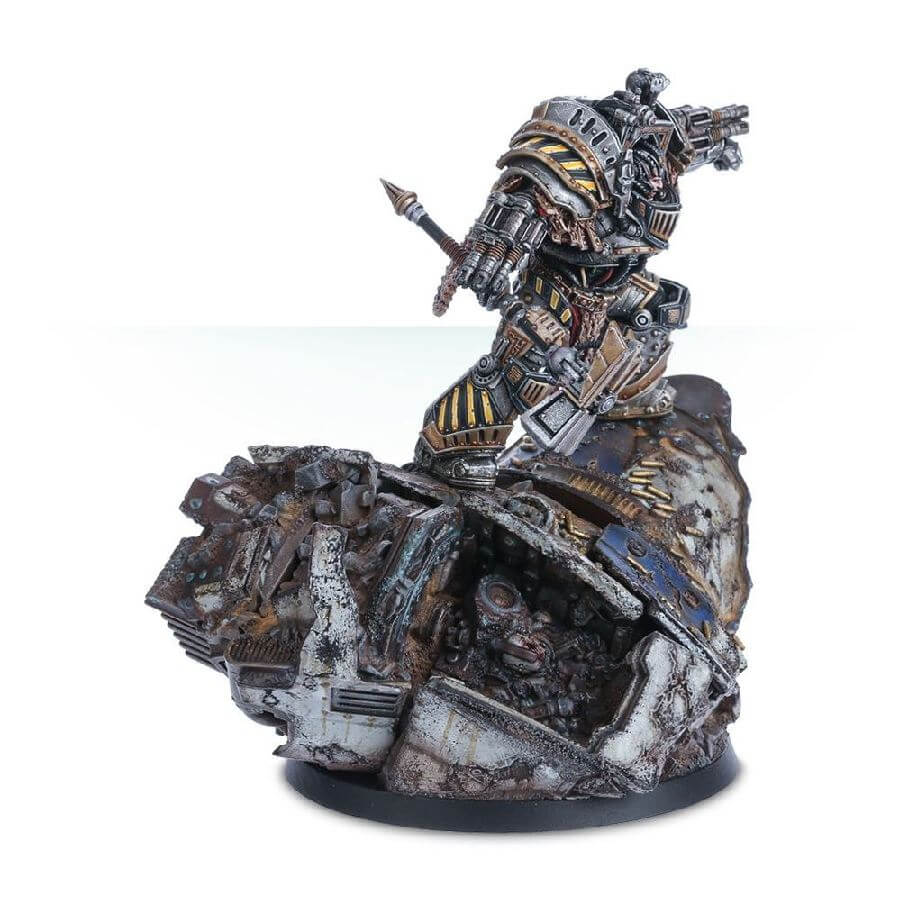
Perturabo, master of fortifications and siegecraft, was discovered on Olympia, a mountainous world dominated by city-states locked in constant warfare. Perturabo quickly rose to power as a master strategist, subjugating his enemies and ruling with an iron fist.
His deep-seated resentment toward those who took his skills for granted shaped much of his personality, leading to a chip on his shoulder that would later fuel his hatred of the Imperium.
When the Emperor found Perturabo, he saw a Primarch who could turn any fortification to dust, a siege master without equal.
However, Perturabo’s bitterness and sense of being undervalued alienated him from his brothers and his father alike.
Must Read: The novel Angel Exterminatus by Graham McNeill explores his psyche, revealing a Primarch who felt that his talents were unappreciated, contributing to his eventual betrayal during the Horus Heresy.
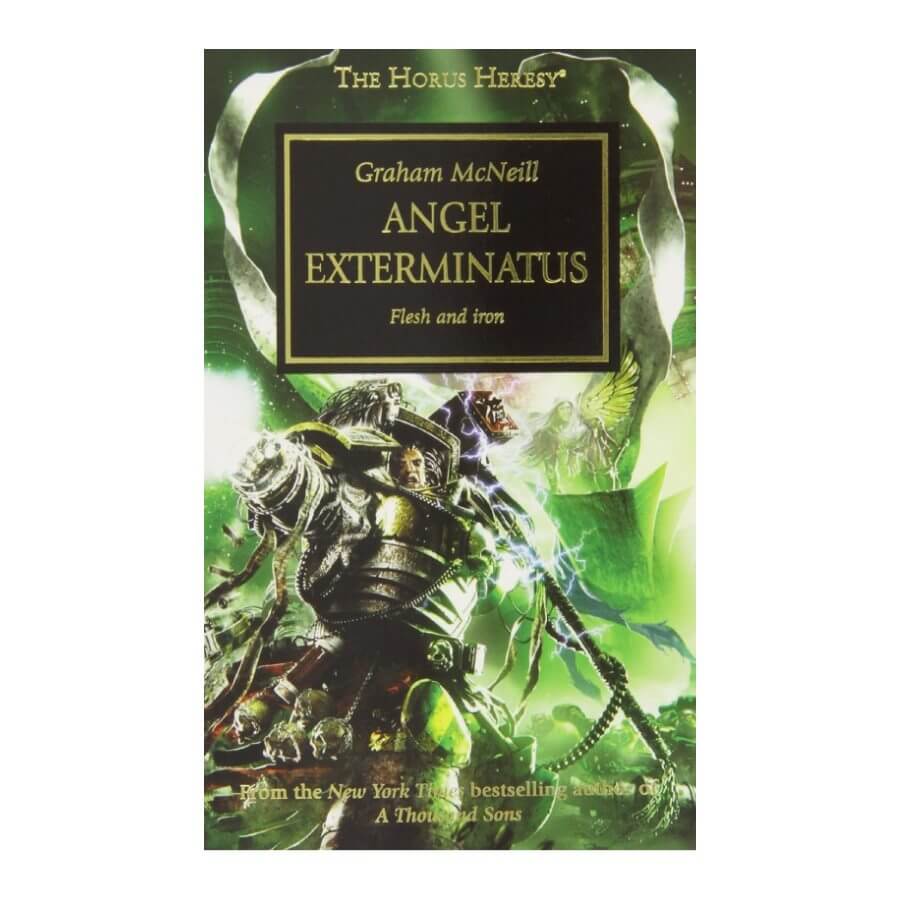
Significance in the Rediscovery Order:
Perturabo’s rediscovery added a critical element to the Imperium’s tactical strengths, but it also introduced a simmering discontent that would later explode.
Perturabo’s bitterness and isolation made him susceptible to Horus’s influence, and his deep-seated resentment toward his father and brothers foreshadowed his eventual allegiance to Chaos.
His expertise in siegecraft made him an invaluable asset, but his personal grievances ultimately made him a dangerous liability.
12. Mortarion, the Twelfth Found
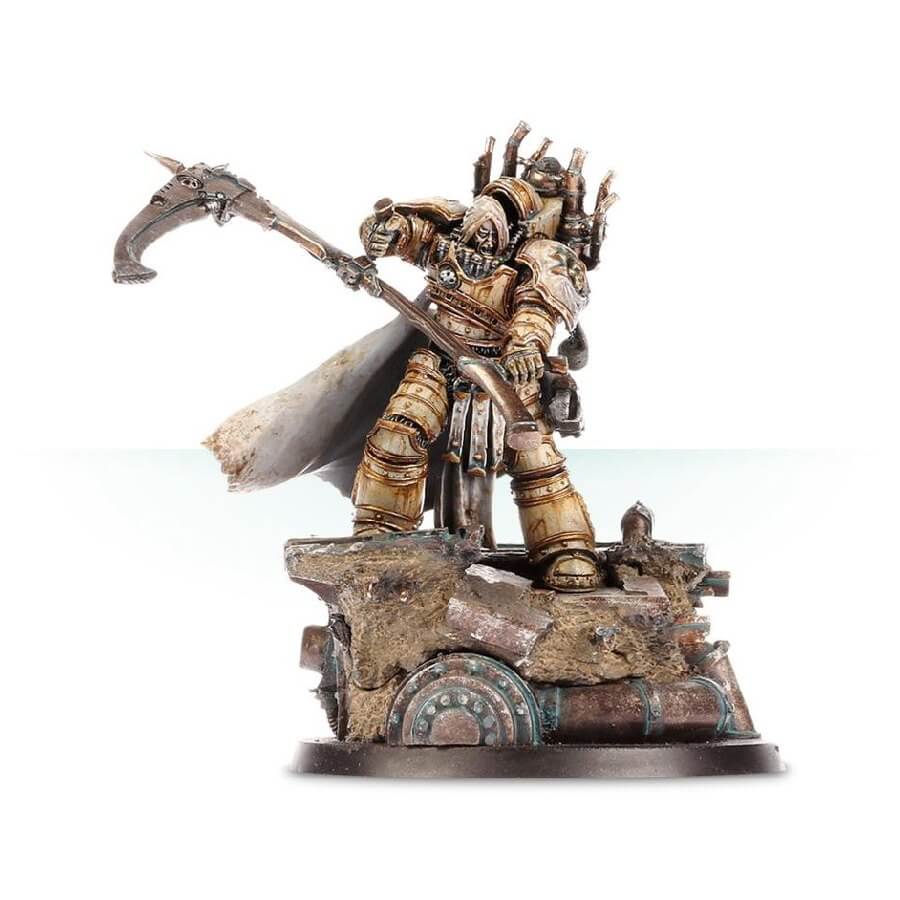
- World: Barbarus
- Discovery Date: 854.M30
- Legion: Death Guard
Mortarion was found on the toxic, death-shrouded world of Barbarus, a planet covered in poisonous mists and ruled by necromantic warlords. Mortarion grew up under the tyranny of these overlords, and his hatred for their rule fueled his determination to overthrow them.
Mortarion’s endurance was legendary; he could survive in environments that would kill most beings, and this resilience became the hallmark of his Legion, the Death Guard.
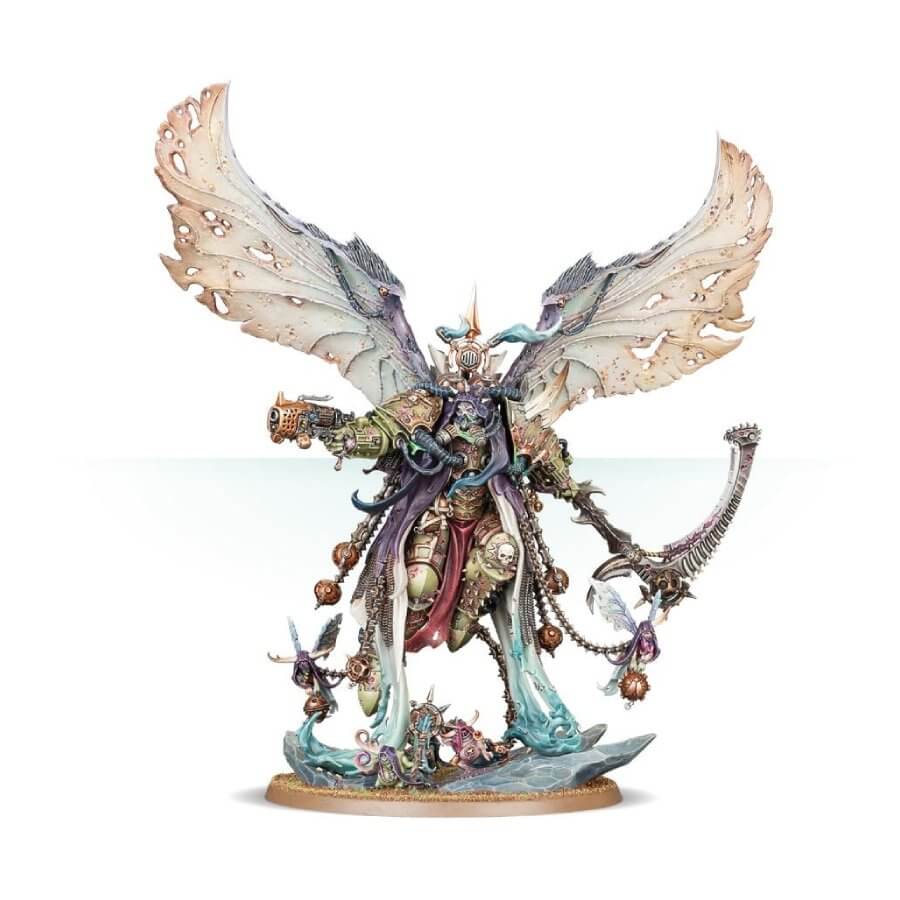
The Emperor’s arrival on Barbarus was met with resistance from Mortarion, who harbored resentment toward those who wielded power over others. Though he accepted the Emperor’s offer to join the Crusade, Mortarion’s distrust lingered.
Must Read: Flight of the Eisenstein by James Swallow provides glimpses into Mortarion’s philosophy and his Legion’s focus on resilience and unyielding strength.
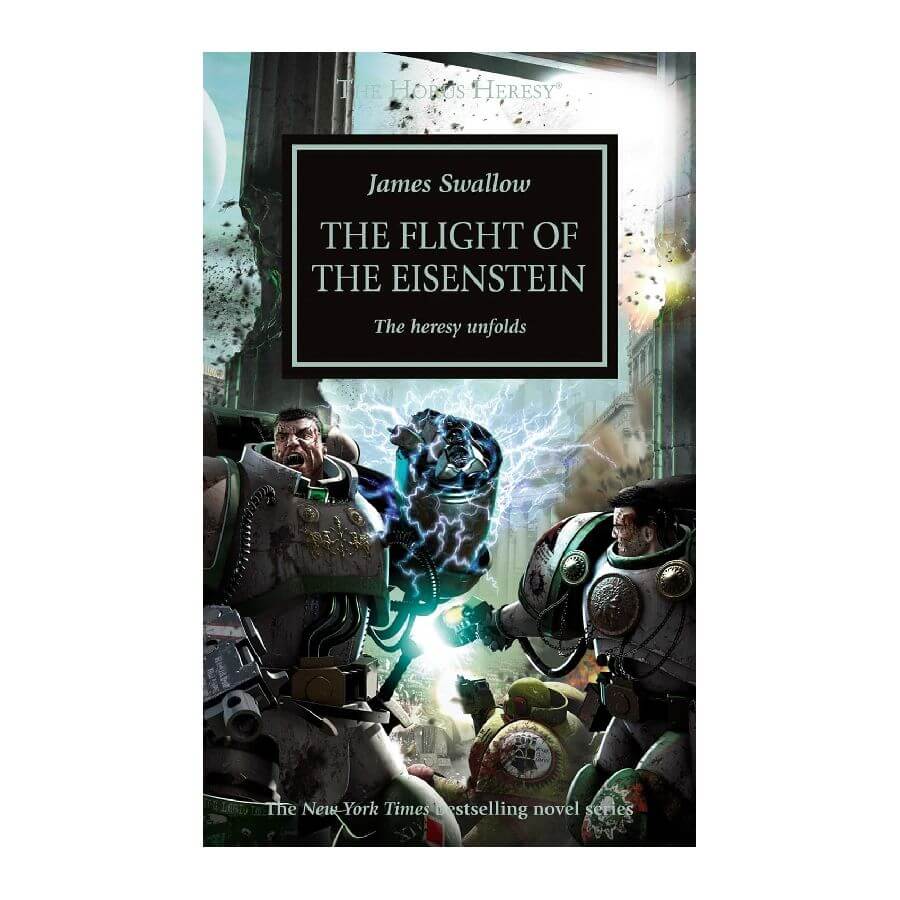
Significance in the Rediscovery Order:
Mortarion’s rediscovery added a darker, more fatalistic edge to the Crusade. His Legion became synonymous with endurance, but his unresolved animosity toward the Emperor created a rift that Horus would later exploit.
Mortarion’s rediscovery underscored the Emperor’s challenge in managing Primarchs whose traumas made them deeply distrustful of authority, a dynamic that would later influence Mortarion’s fall to Nurgle during the Heresy.
13. Lorgar Aurelian, the Thirteenth Found
- World: Colchis
- Discovery Date: 857.M30
- Legion: Word Bearers
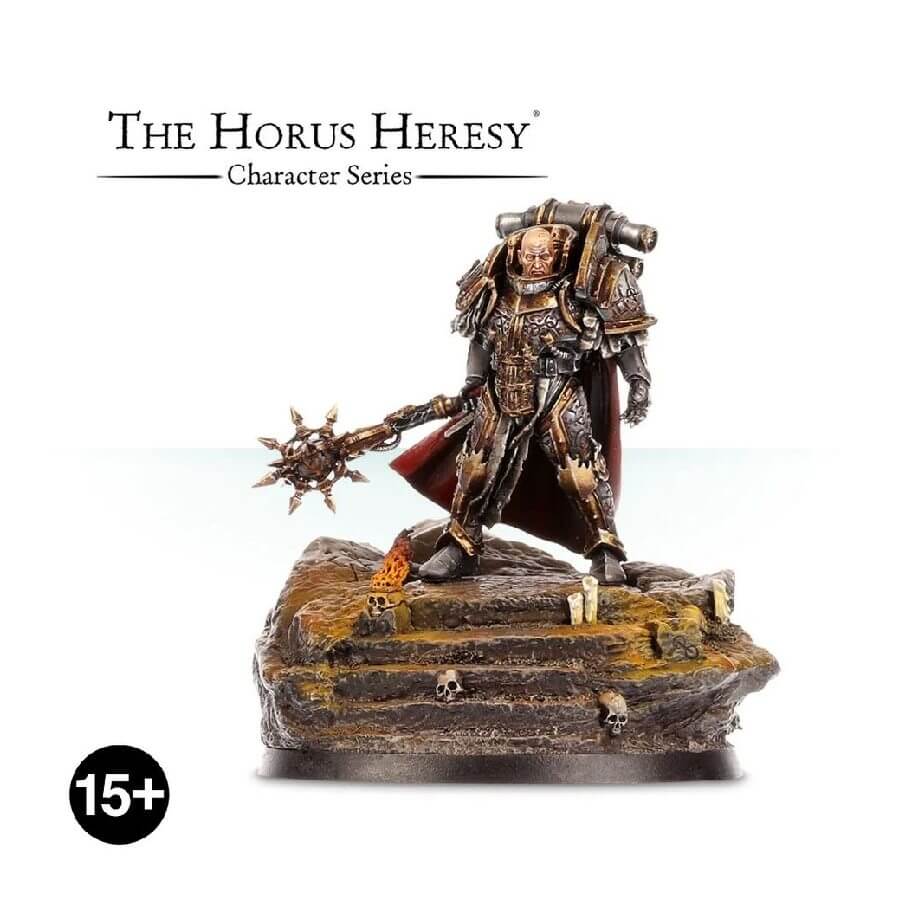
Lorgar Aurelian was discovered on Colchis, a deeply religious world where faith and worship dominated society. Unlike his more warlike brothers, Lorgar was a spiritual figure, revered as a prophet by the people of Colchis.
His devotion to the Emperor was intense, almost to the point of fanaticism, and he saw the Great Crusade as a holy endeavor. Lorgar’s Word Bearers became known for their zealous dedication, spreading the Emperor’s light with religious fervor.
However, the Emperor did not welcome Lorgar’s worship. When Lorgar’s fixation on reverence led to inefficiency, the Emperor chastised him publicly, shattering Lorgar’s devotion.
This event, depicted in The First Heretic by Aaron Dembski-Bowden, marks the moment when Lorgar turned to the Ruinous Powers, seeking validation for his faith elsewhere.
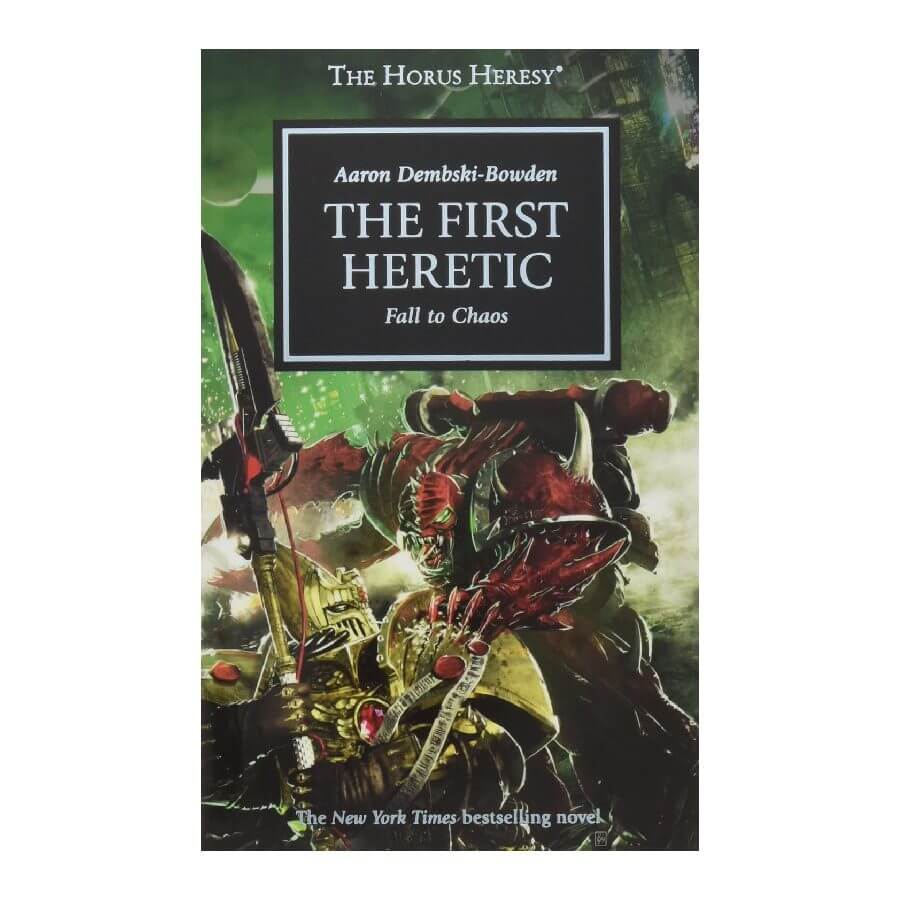
Significance in the Rediscovery Order:
Lorgar’s rediscovery added a moral and religious dimension to the Crusade, but it also introduced ideological friction with the Emperor. Lorgar’s need for a figure to worship made him susceptible to the Chaos Gods’ influence.
His rediscovery not only added zeal to the Crusade but also highlighted the perils of devotion turned dark, foreshadowing his role as the first Primarch to embrace Chaos.
14. Jaghatai Khan, the Fourteenth Found
- World: Mundus Planus
- Discovery Date: 865.M30
- Legion: White Scars
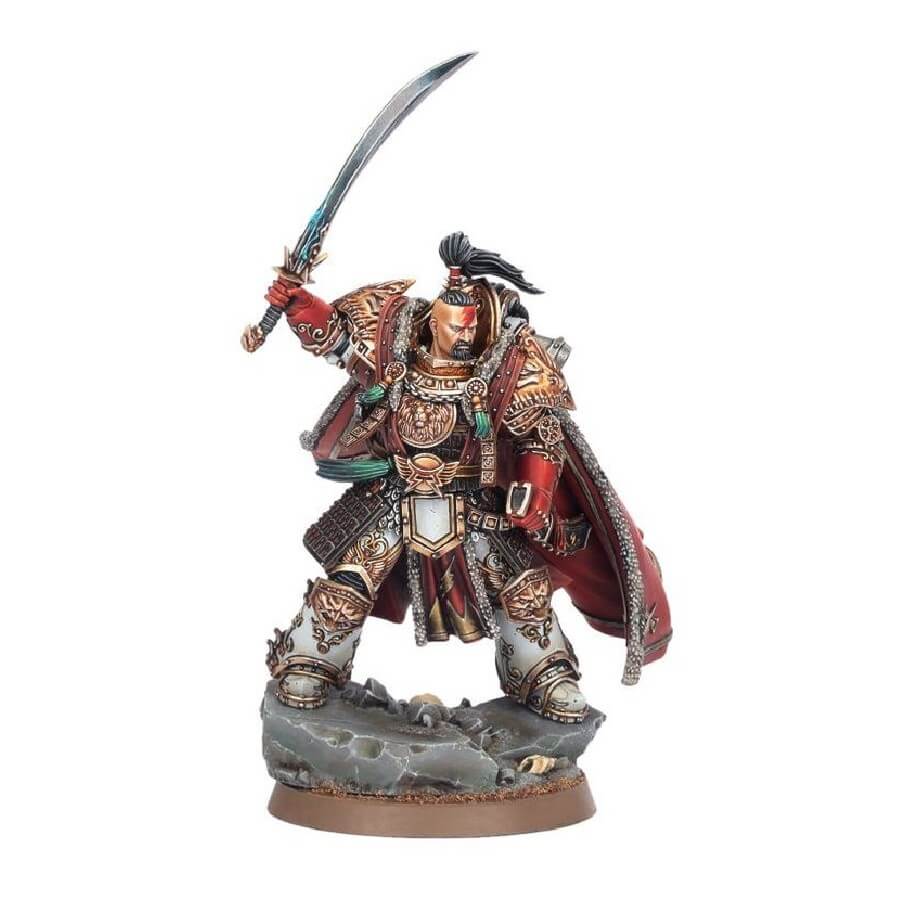
Jaghatai Khan, the Warhawk, was discovered on the plains of Mundus Planus, a world of vast steppes and fierce tribes locked in ceaseless conflict. Raised among the nomadic Khaganate tribes, Jaghatai developed a swift and deadly combat style centered around mobility and hit-and-run tactics. His world valued honor, but it was an honor defined by martial prowess and the thrill of the hunt.
When the Emperor found Jaghatai, he saw a Primarch who valued freedom and autonomy above all else. The Khan was not easily impressed by hierarchy or tradition, preferring instead to lead in his own unique way.
This made him an enigma among his brothers; Jaghatai was both fiercely loyal and yet always kept his own counsel. His Legion, the White Scars, adopted his lightning-fast approach to warfare, making them masters of rapid assaults and unpredictable tactics.
Must Read: Scars by Chris Wraight delves into the complex mind of Jaghatai, capturing his distaste for rigid authority and his fierce independence.
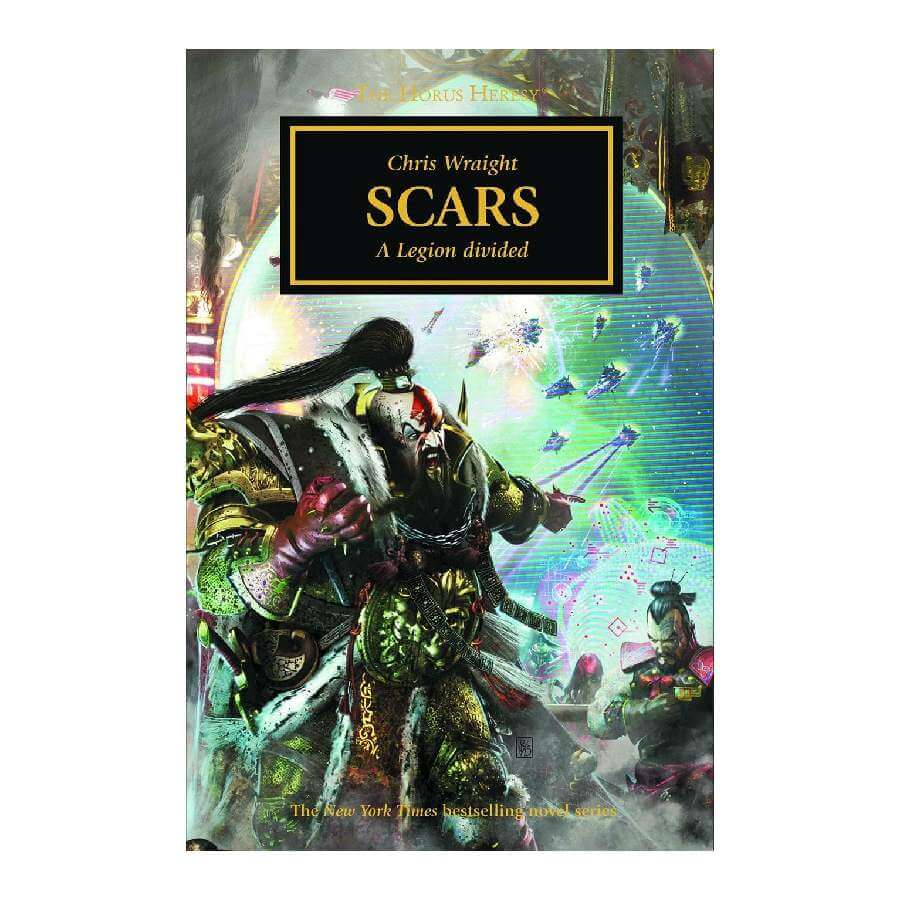
Significance in the Rediscovery Order:
Jaghatai’s rediscovery introduced a new form of warfare to the Imperium—one that emphasized speed, agility, and strategic unpredictability.
His emphasis on freedom occasionally put him at odds with other Primarchs, especially those like Rogal Dorn, who embodied rigid structure.
His rediscovery added a dynamic layer to the Crusade, challenging the Imperium’s reliance on brute force with a tactical flexibility that would become invaluable during the Heresy.
15. Konrad Curze, the Fifteenth Found
- World: Nostramo
- Discovery Date: 896.M30
- Legion: Night Lords
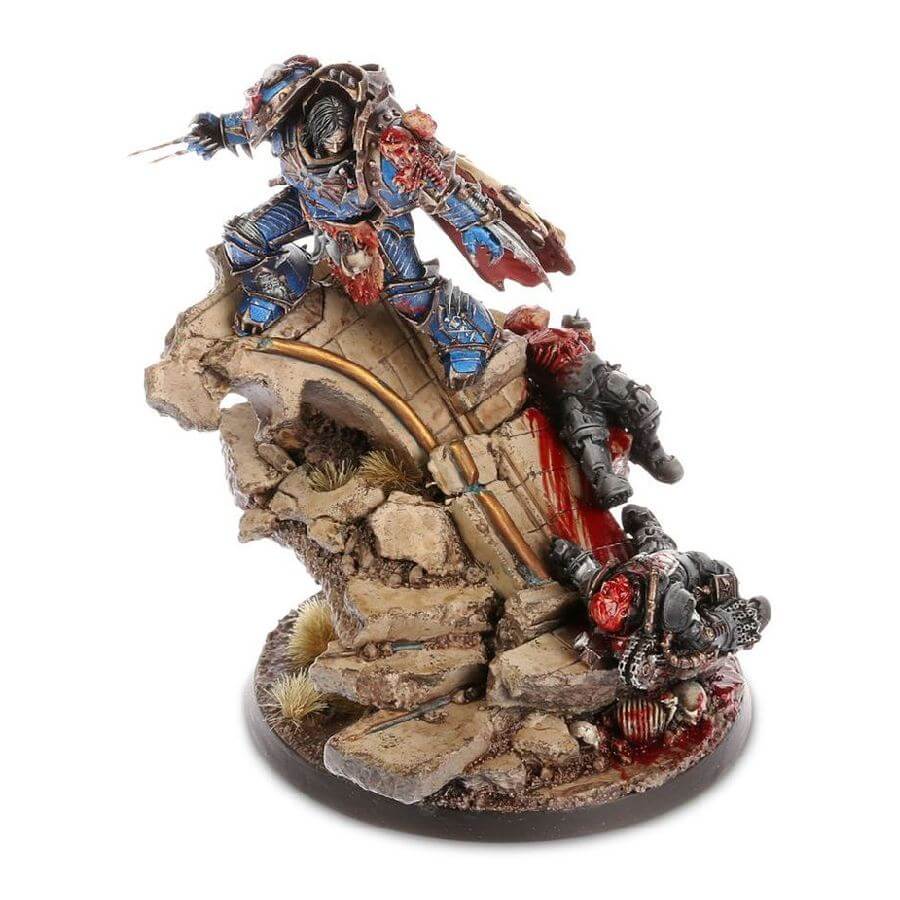
Konrad Curze, known as the Night Haunter, was discovered on Nostramo, a world shrouded in perpetual darkness and plagued by crime and corruption. From a young age, Curze possessed a dark, prophetic vision, often haunted by forebodings of death and ruin.
As he grew, he took it upon himself to cleanse Nostramo of its corruption, ruling through fear and brutal justice. However, this self-imposed mission took a heavy toll on his psyche, giving rise to a terrifying and relentless enforcer.
The Emperor’s encounter with Curze was a difficult one; Curze’s grim worldview and propensity for violence conflicted with the Emperor’s vision of a more ordered Imperium. Nevertheless, he was given command of the Night Lords, a Legion that would mirror his merciless approach to justice.
Must Read: The Dark King by Graham McNeill offers a haunting look into Curze’s descent into madness and his strained relationship with his brothers and the Imperium. In Vulkan Lives, Konrad Curze plays the role of a relentless tormentor, capturing Vulkan and subjecting him to repeated cycles of brutal psychological and physical torture, hoping to break the indomitable Salamander’s spirit.
Significance in the Rediscovery Order:
Curze’s rediscovery introduced a sense of dread and fear into the Crusade. His methods were effective but morally divisive, relying on terror rather than inspiration.
His foreknowledge of his own dark fate and his grim view of the Imperium foreshadowed the fracturing of the Primarchs.
Curze’s rediscovery embodied the hidden horrors of the Crusade, revealing the brutal lengths to which the Imperium might go to enforce compliance.
16. Angron, the Sixteenth Found
- World: Nuceria
- Discovery Date: 899.M30
- Legion: World Eaters
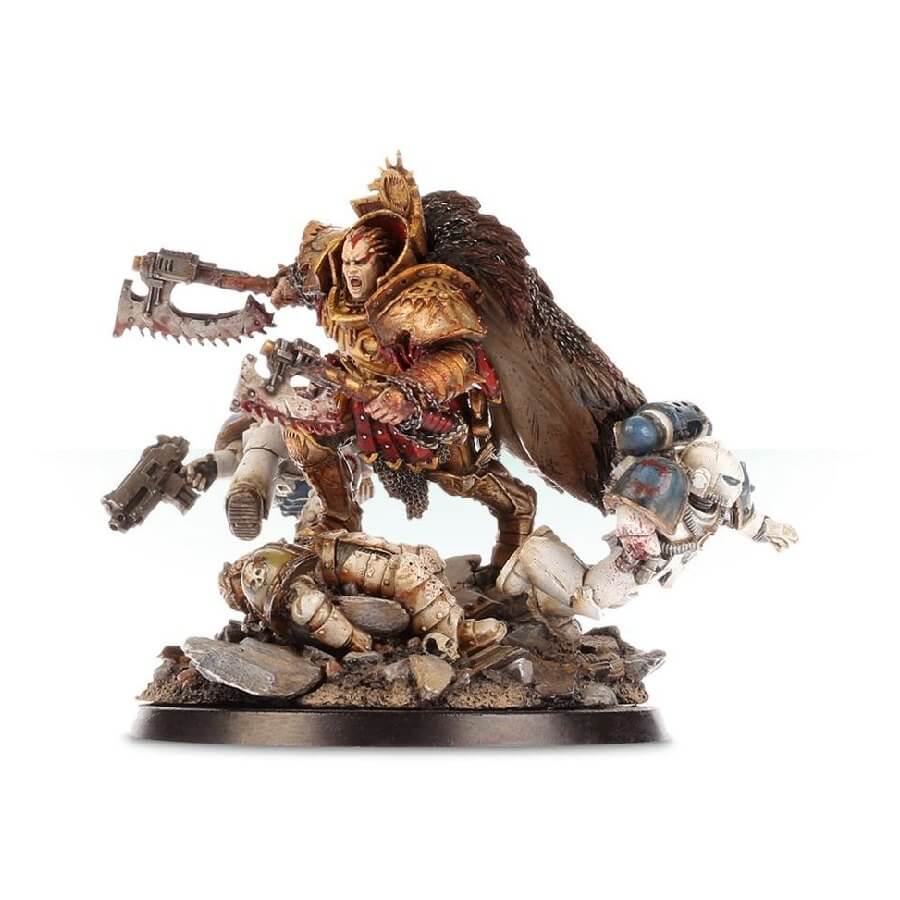
Angron, the Red Angel, was found on Nuceria, a brutal world where he was forced into a life of gladiatorial combat as a slave. His body was modified with the Butcher’s Nails—neural implants designed to enhance aggression and dull pain.
This gave Angron unparalleled combat prowess but at a tremendous psychological cost, as the implants drove him into uncontrollable rages. Angron became a champion among the gladiators, leading a slave rebellion before the Emperor arrived.
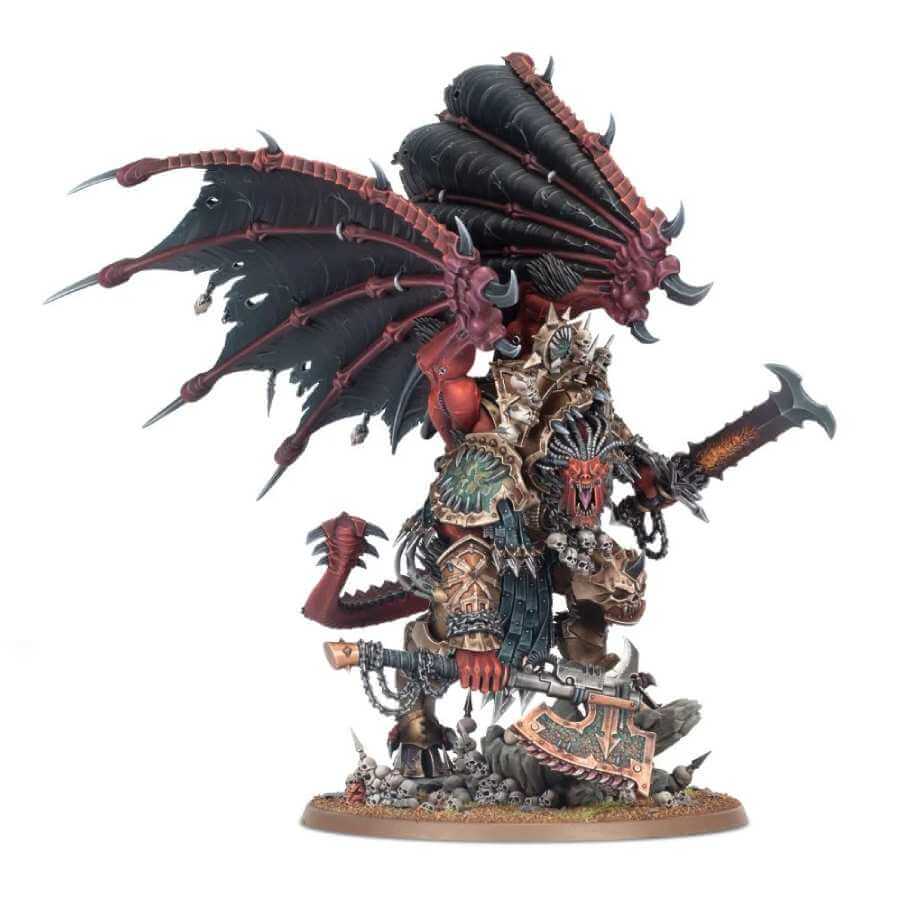
The Emperor’s intervention on Nuceria was a point of resentment for Angron, who saw it as interference in his personal war against the slavers. Though he was brought into the Crusade, his resentment and trauma never healed.
The World Eaters, his Legion, adopted Angron’s brutal approach to warfare, becoming known for their berserker rage and relentless assault tactics.
Must Read: Betrayer by Aaron Dembski-Bowden captures the tragic complexity of Angron, showing him as a tormented soul rather than a mindless berserker.
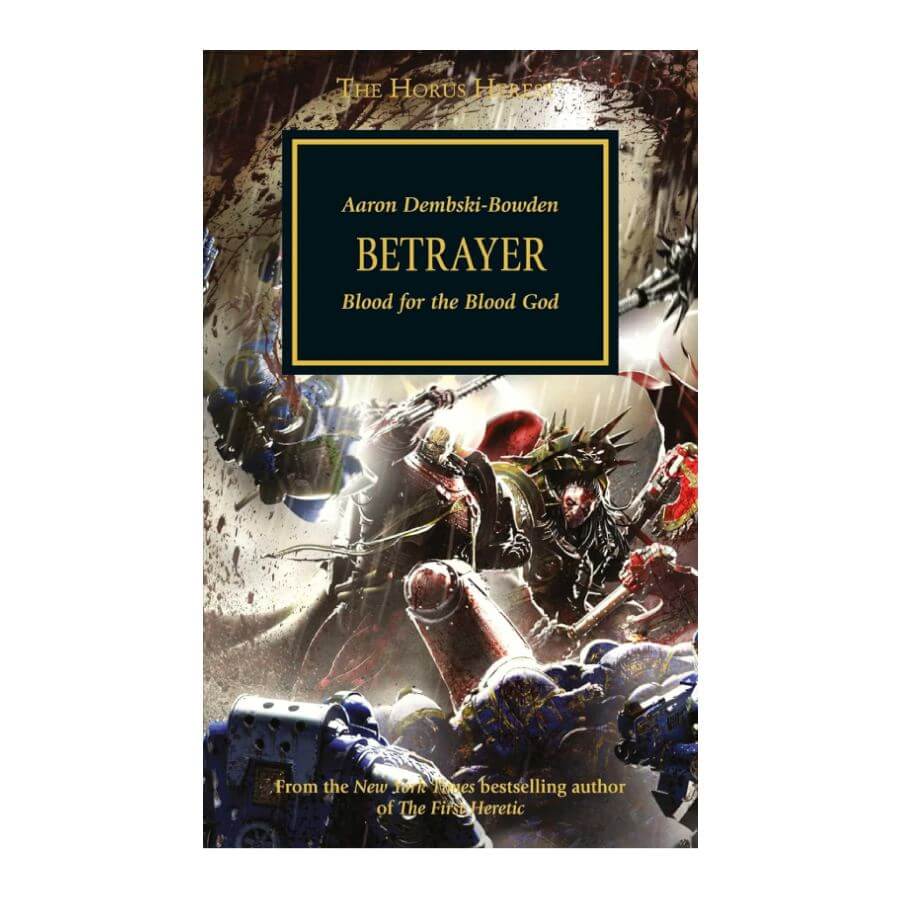
Significance in the Rediscovery Order:
Angron’s rediscovery brought a unique tragedy to the Crusade. His fury and pain, channeled through his Legion, represented the toll of unbridled aggression and suffering.
The Emperor’s failure to remove the Butcher’s Nails marked a moral failing that would resonate throughout Angron’s life, making him a vulnerable target for Chaos.
His rediscovery underscored the darker sacrifices the Imperium was willing to make in its quest for power.
17. Corvus Corax, the Seventeenth Found
- World: Deliverance
- Discovery Date: 922.M30
- Legion: Raven Guard
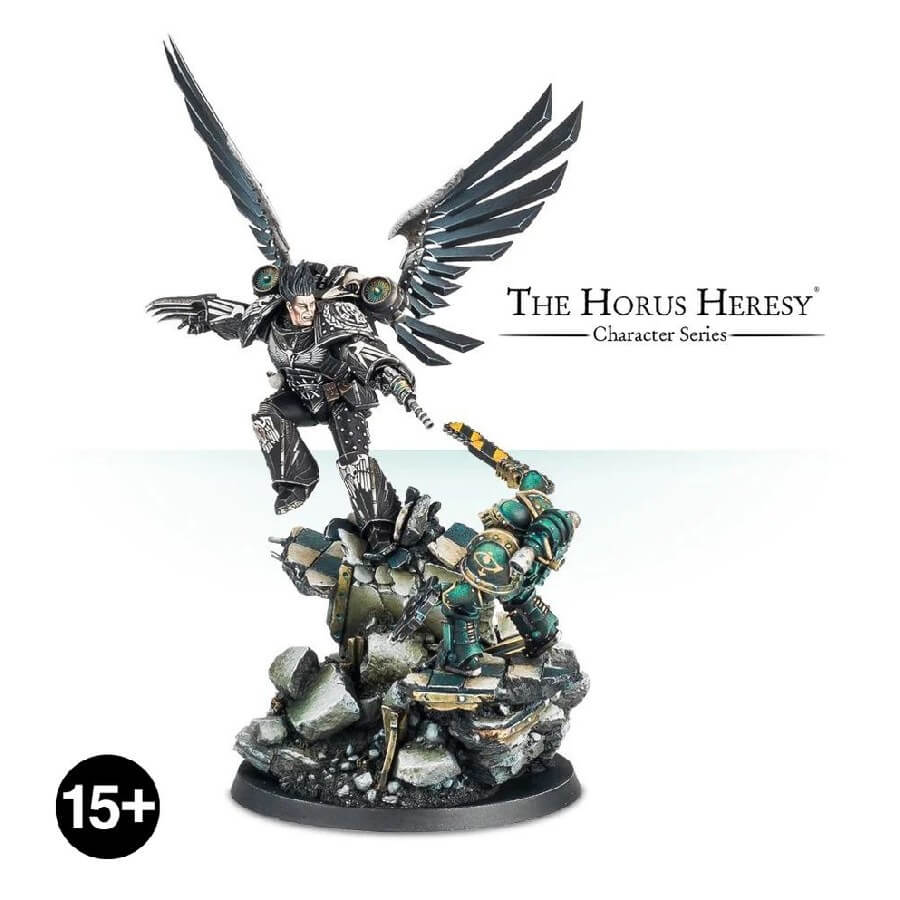
Corvus Corax, the Liberator, was found on the moon of Lycaeus, orbiting the industrial world of Kiavahr. Lycaeus was a penal colony where the oppressed toiled under the rule of Kiavahr’s corrupt overlords.
Corax led a rebellion to free his people, and by the time the Emperor arrived, he had already liberated Lycaeus. Corax’s philosophy of guerrilla warfare and his dedication to freedom and justice resonated deeply with his people and his Legion, the Raven Guard.
The Emperor welcomed Corax into the Crusade, recognizing his strategic brilliance and his commitment to fighting oppression. Corax valued liberty and despised tyranny, traits that often made him skeptical of the Imperium’s more authoritarian practices.
Must Read: Deliverance Lost by Gav Thorpe explores Corax’s struggle to balance his ideals with the brutal demands of war, showcasing his moral complexity.
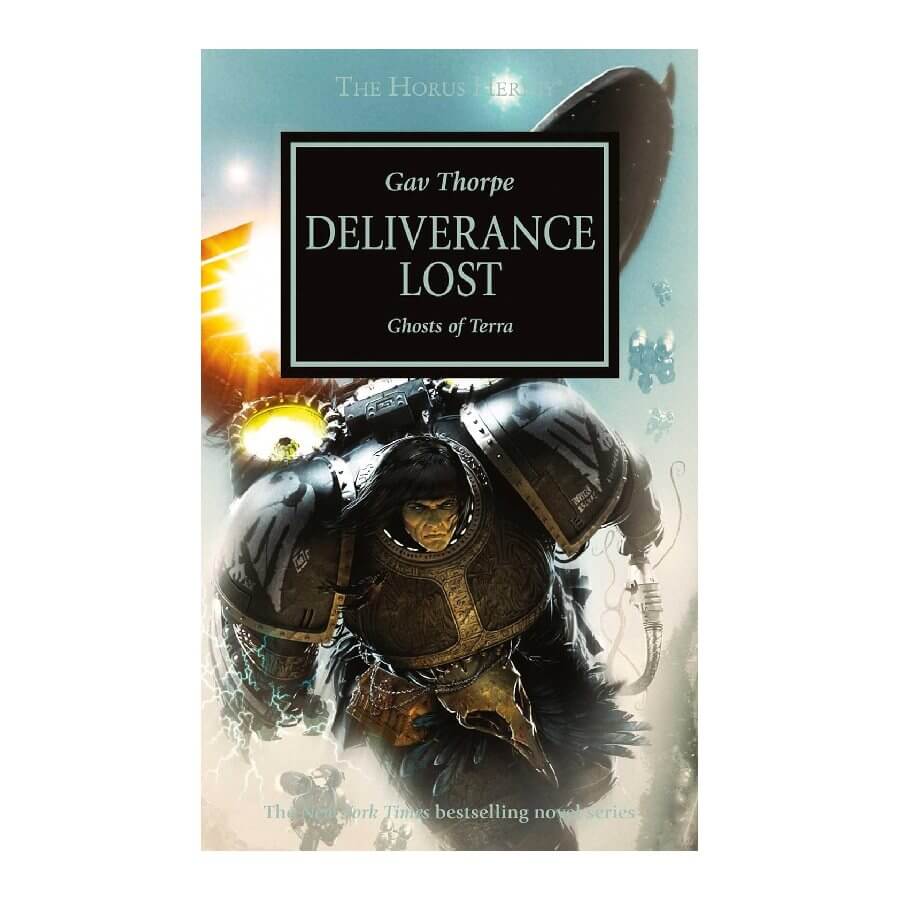
Significance in the Rediscovery Order:
Corax’s rediscovery brought a conscience to the Crusade, as he questioned the Imperium’s methods and sought to protect humanity rather than simply conquer it.
His emphasis on stealth and tactical precision introduced a new approach to warfare that prioritized strategic finesse over brute force.
Corax’s rediscovery reminded the Imperium of its humanitarian values, even as the galaxy descended into darkness.
18. Alpharius Omegon, the Eighteenth and Last Found
- World: Unknown
- Discovery Date: 981.M30
- Legion: Alpha Legion
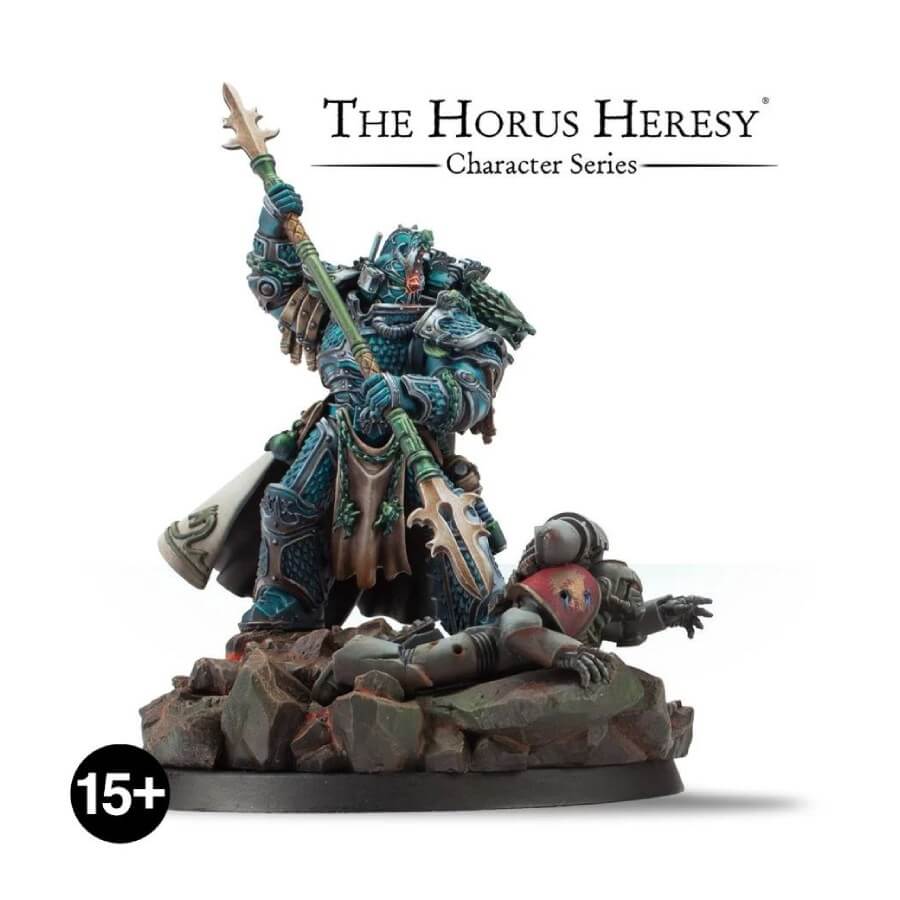
Alpharius Omegon, the Hydra, was the last Primarch to be discovered, though even his discovery is shrouded in mystery. Unlike his brothers, Alpharius operated in secrecy, often hiding his identity and utilizing deception as a tool of warfare.
The Alpha Legion he led was the most enigmatic of all Legions, employing guerrilla tactics, espionage, and infiltration to achieve their objectives. It is later revealed that Alpharius had a twin, Omegon, adding another layer of mystery to their already secretive methods.
The Emperor’s relationship with Alpharius was markedly different; Alpharius and his Legion functioned independently, often relying on intricate plans and covert operations rather than open combat.
Must Read: The novel Legion by Dan Abnett offers a fascinating look at Alpharius’s motivations and his belief that loyalty could take many forms, even when it seemed contradictory.
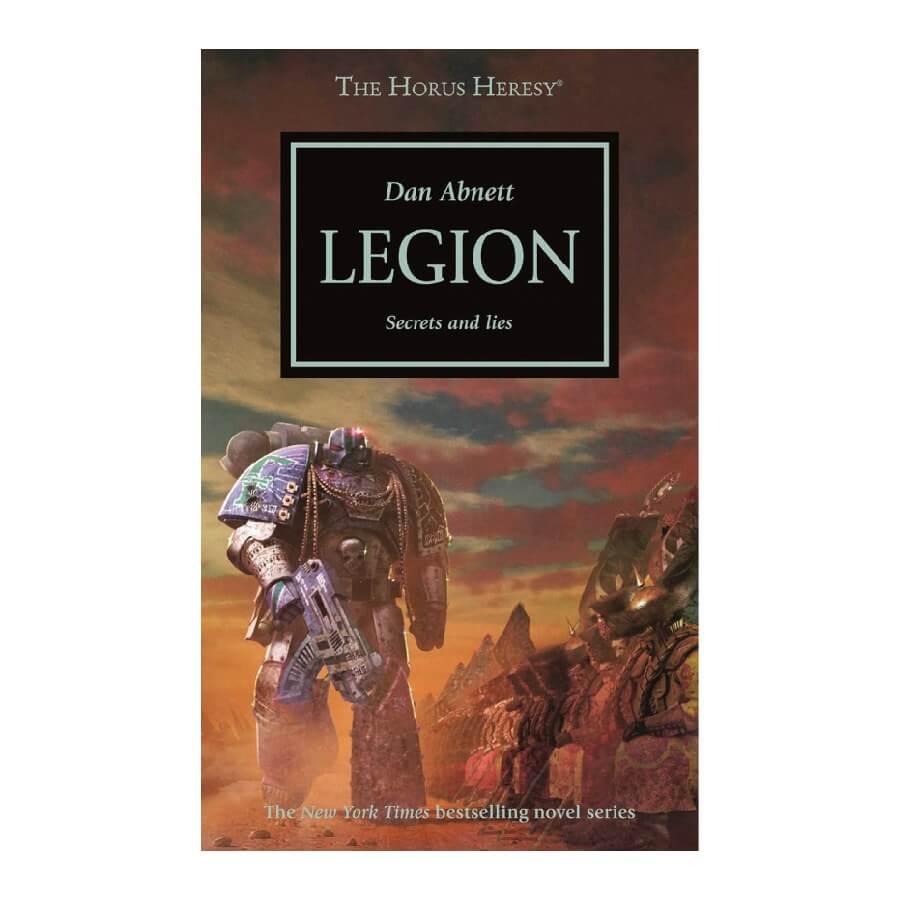
Significance in the Rediscovery Order:
As the last discovered Primarch, Alpharius brought an entirely new dynamic to the Crusade—one of secrecy, flexibility, and deception. His rediscovery introduced ambiguity into the Crusade, challenging the rigid, hierarchical nature of the Imperium.
Alpharius’s motives remained unclear, and his allegiance seemed as much a matter of strategic calculation as loyalty.
His rediscovery emphasized the notion that the Crusade was as much about control and manipulation as it was about conquest, adding a layer of complexity to the Imperium’s struggle.
The Two Missing Primarchs
The two missing Primarchs, often referred to as the “Lost Primarchs” or “Forgotten Primarchs,” are one of the enduring mysteries in Warhammer 40k lore.
Games Workshop has intentionally left them shrouded in secrecy, adding to the intrigue and mystery surrounding the Primarchs and the Horus Heresy.
Here’s a summary of what is known, speculated, and hinted at about these enigmatic figures.
Known Facts and Canon References
- Redaction of Their Records: The records of the II and XI Legions, along with their Primarchs, have been deliberately erased from Imperial history. In official texts and archives, their files are either redacted or marked as “expunged,” suggesting a significant reason behind their removal.
- Hints in the Horus Heresy Novels: Certain Horus Heresy novels and short stories allude to the Lost Primarchs and their fates. For instance, The First Heretic by Aaron Dembski-Bowden has a scene where Lorgar, the Primarch of the Word Bearers, briefly discusses the Lost Primarchs. He notes that their fates serve as warnings, suggesting that they were perhaps a lesson or a cautionary tale for the remaining Primarchs.
- The Emperor’s Actions: It’s strongly implied that the Emperor himself ordered the erasure of these Primarchs and their Legions from Imperial records. This suggests that whatever occurred with the II and XI Legions, it was severe enough for the Emperor to take extraordinary measures to keep their memory suppressed.
- Reprimands and Consequences: There are hints in lore that the Lost Primarchs may have deviated from the Emperor’s plan in such a way that could not be corrected or forgiven, potentially involving actions or ideologies seen as heretical, chaotic, or existentially dangerous to the Emperor’s vision of the Imperium.
- Influence on the Remaining Primarchs: Many of the other Primarchs, especially those with strong personalities or rebellious tendencies, were aware of the Lost Primarchs’ fates and seemed wary of discussing them. This awareness may have influenced certain Primarchs, like Lorgar and Angron, to either avoid certain paths or fear the Emperor’s judgment.
Popular Speculations and Fan Theories
Since concrete information is scarce, fans have developed several theories about the Lost Primarchs and the reasons behind their redaction:
Exposure to Chaos
A popular theory is that one or both of the Lost Primarchs may have encountered Chaos before Horus’s fall. If they were somehow corrupted or manipulated by Chaos early on, the Emperor may have decided that removing them entirely was the only way to prevent their influence from spreading within the fledgling Imperium.
Ideological Rebellion or Overreach:
Another theory suggests that one or both Lost Primarchs opposed the Emperor’s ideals, taking a stance that the Emperor deemed too dangerous. They might have pursued forbidden knowledge, questioned the Emperor’s authority, or sought to rule independently. This rebellion, if severe enough, could have led to their “disappearance” from Imperial records.
Incompatibility with the Great Crusade’s Vision:
Some fans speculate that these Primarchs may have had philosophical or tactical approaches incompatible with the goals of the Great Crusade. For example, they might have been overly violent or even pacifistic, failing to fit within the Emperor’s strict vision for a unified, militaristic Imperium.
A Tragic “Accident”:
A few theories imply that one or both Lost Primarchs might have fallen victim to a disaster or sabotage that the Emperor wanted to cover up. This would suggest that their erasure wasn’t a punishment but an attempt to avoid demoralizing the other Primarchs.
Potential Return:
Some fans hold out hope that the Lost Primarchs could be reintroduced as part of a future narrative arc in Warhammer 40k. Since their fate is unresolved, it’s possible that Games Workshop could one day use them to add new depth to the lore.
The Legacy of Rediscovery of the Primarchs
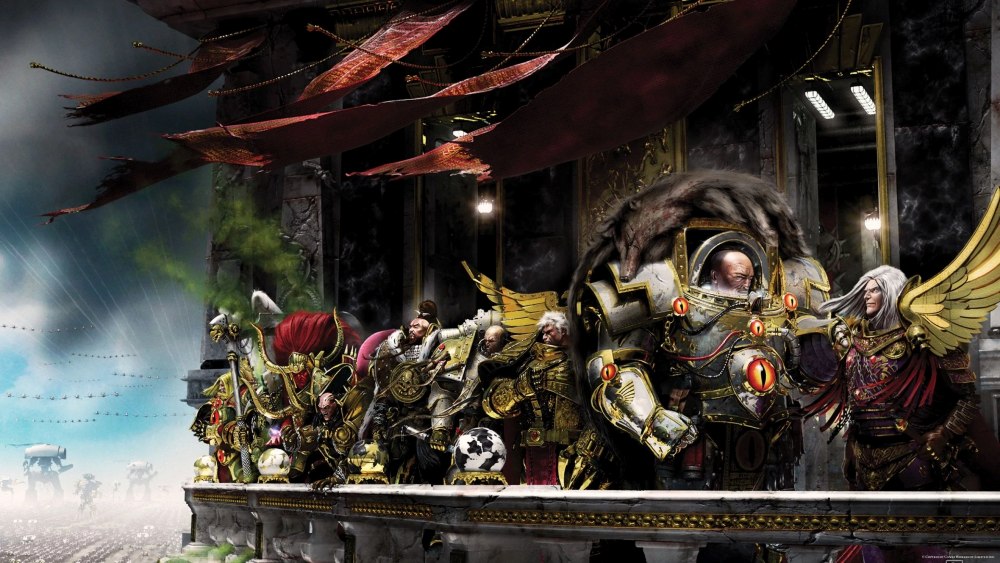
The rediscovery of the Primarchs was not just a series of events; it was a shaping of fate, one that bound the Emperor’s sons to a destiny both triumphant and tragic.
Each Primarch brought a unique set of strengths and weaknesses to the Great Crusade, but their diverse temperaments and ideologies also sowed the seeds of discord that would later erupt during the Horus Heresy.
From Horus’s early bond with the Emperor, which fostered a sense of rivalry and ambition, to Alpharius’s enigmatic allegiance, each Primarch’s rediscovery impacted the Crusade’s success and, ultimately, the Imperium’s survival.
Some Primarchs sought order, others craved freedom, and a few, like Angron and Curze, bore scars too deep to heal. In many ways, the order of rediscovery influenced the emotional and political dynamics among the Primarchs, leading them to either unify or fragment as events unfolded.
The rediscovery order also highlights the Emperor’s often cold and calculated approach to his creations. The Primarchs, for all their heroism and loyalty, were tools to the Emperor, and this utilitarian view would prove costly as they struggled to reconcile their own humanity with their roles as instruments of the Imperium.
Ultimately, the rediscovery of the Primarchs was both a victory and a harbinger of ruin, a fateful chapter that shaped the galaxy-spanning saga of Warhammer 40k and cast shadows over the Imperium’s eternal war.
The rediscovery of each Primarch was a step toward unity, but also a step closer to the fall of the Imperium, a paradox that captures the essence of the grim darkness of the future.
FAQs
Why were the Primarchs scattered across the galaxy?
The Chaos Gods, fearing the Emperor’s plans, scattered the Primarchs as infants through the Warp, disrupting the Emperor’s vision and shaping the personalities of each Primarch.
Are the Primarchs truly immortal?
Primarchs are highly resilient but not immortal. They can be killed by powerful forces, as seen in the Horus Heresy, though some survive to the 41st Millennium.
Why were the II and XI Primarchs erased from records?
The Emperor erased them due to actions deemed unforgivable or dangerous. Their redaction serves as a cautionary tale, adding mystery to the lore.
How did the Emperor find the Primarchs?
The Emperor used psychic foresight, leading expeditions across the galaxy to locate his sons. Each Primarch’s upbringing on different worlds uniquely shaped their personalities.
Did all the Primarchs willingly join the Emperor?
No. Some, like Horus, were eager to join, while others, like Angron and Mortarion, were reluctant or resentful, leading to lingering tensions.
Did the Emperor truly care about the Primarchs as his sons?
The Emperor’s bond with the Primarchs was complex; he allowed them to call him “father” but prioritized the Imperium over any personal attachment.
Why did some Primarchs fall to Chaos?
Chaos exploited each Primarch’s unique vulnerabilities, using their personalities and traumas to corrupt them and turn them against the Emperor.
Are there any Primarchs still active in the 41st Millennium?
Yes. Roboute Guilliman and Lion El’Jonson have returned, and Mortarion, Fulgrim and Magnus serve as Daemon Princes. Other Primarchs are known to be alive but their whereabouts and actions are not entirely known.
Why did the Emperor choose Horus as Warmaster?
Horus, the first discovered and closest to the Emperor, was known for his charisma and tactical skill, making him a natural choice as Warmaster.

